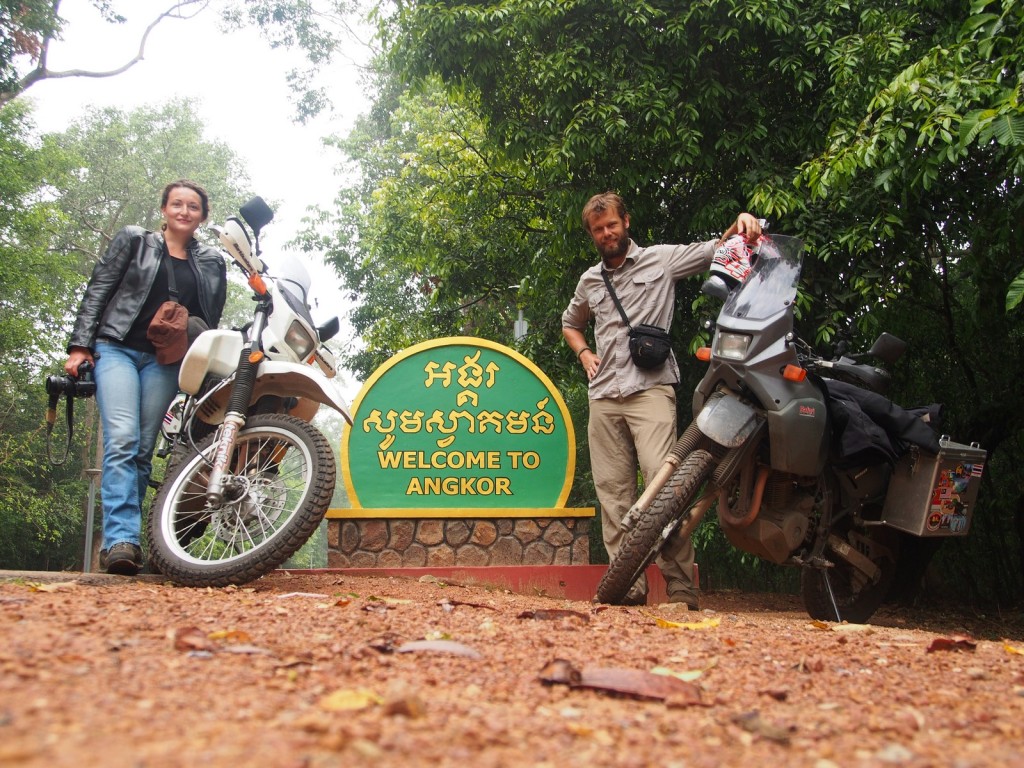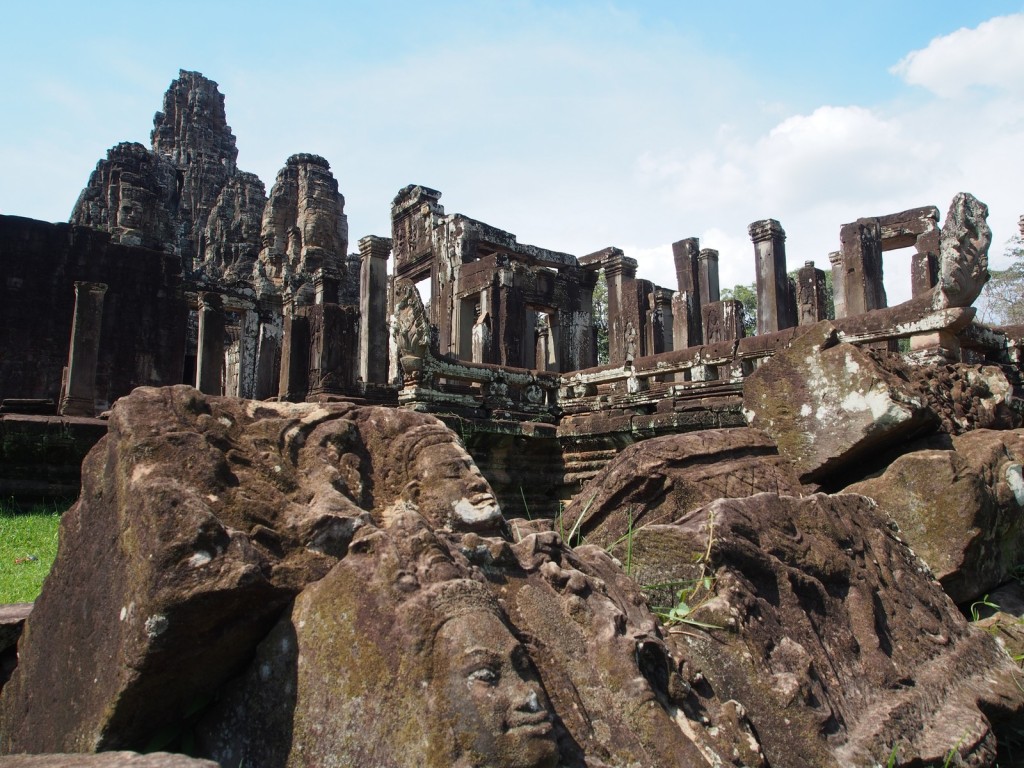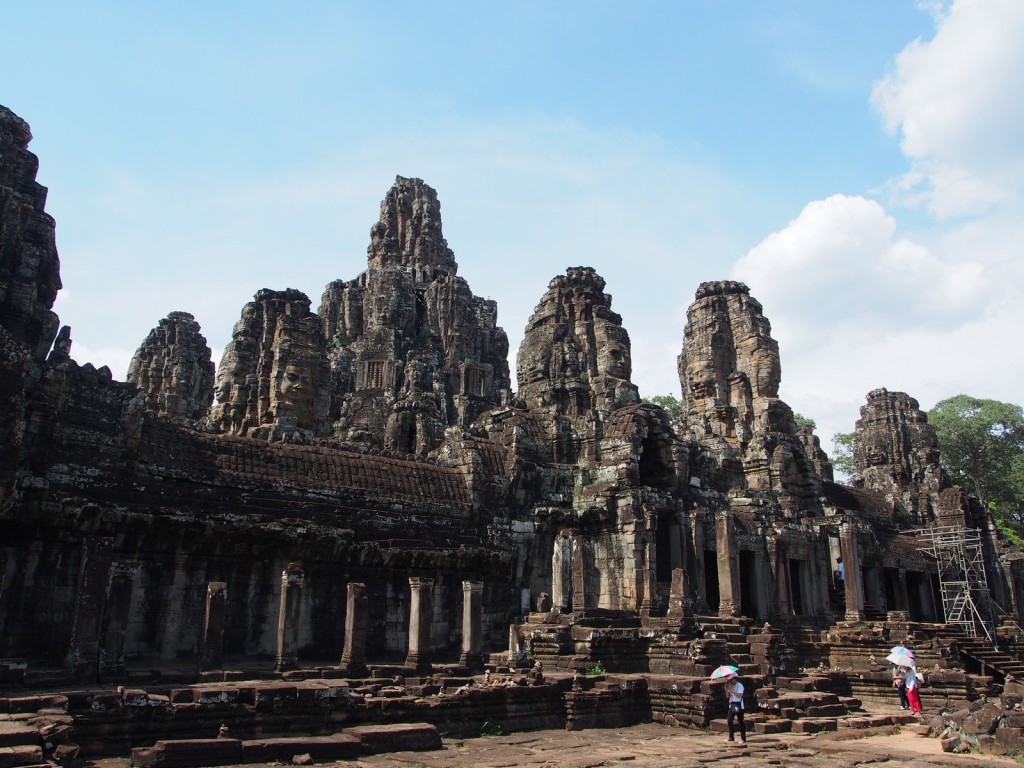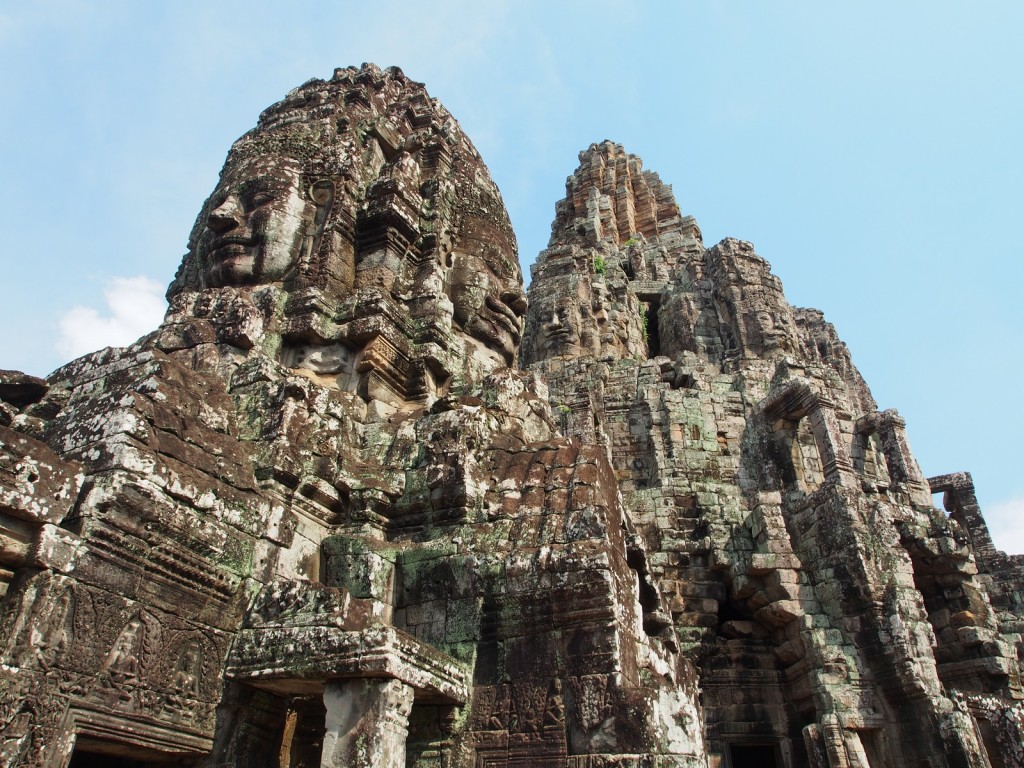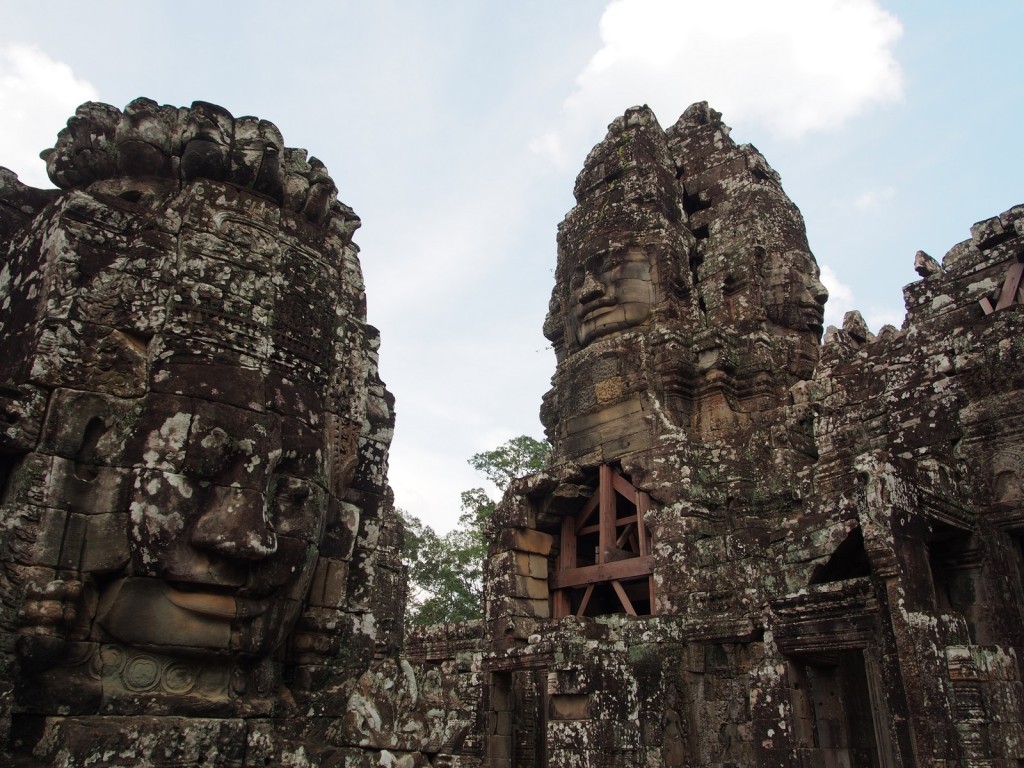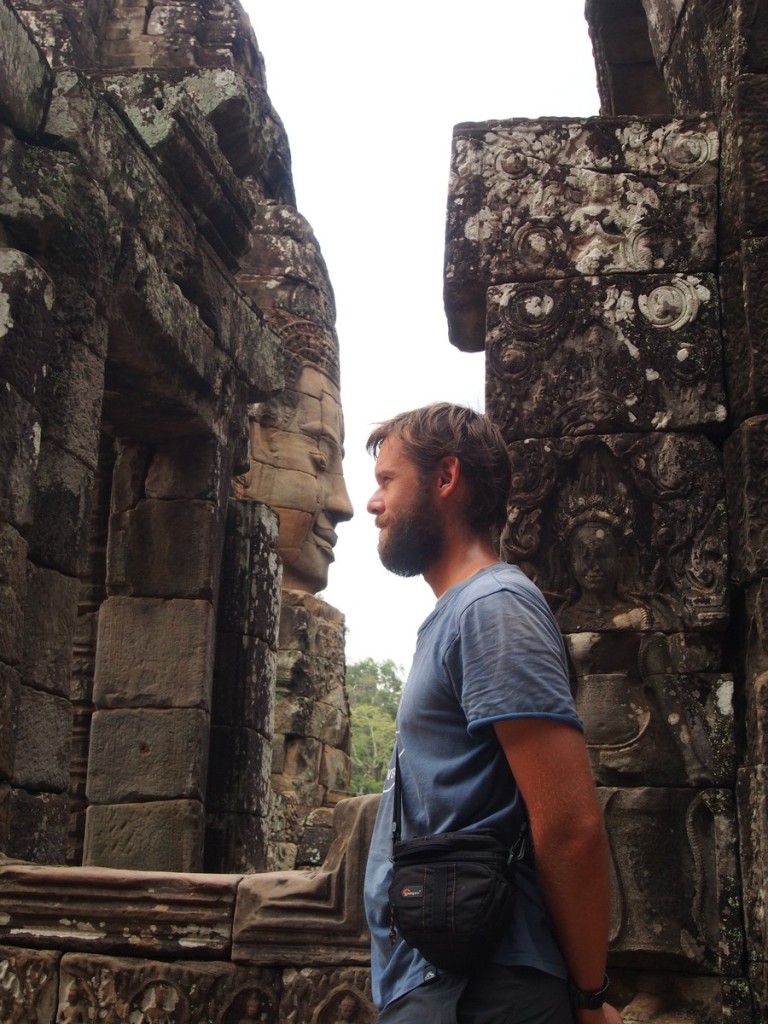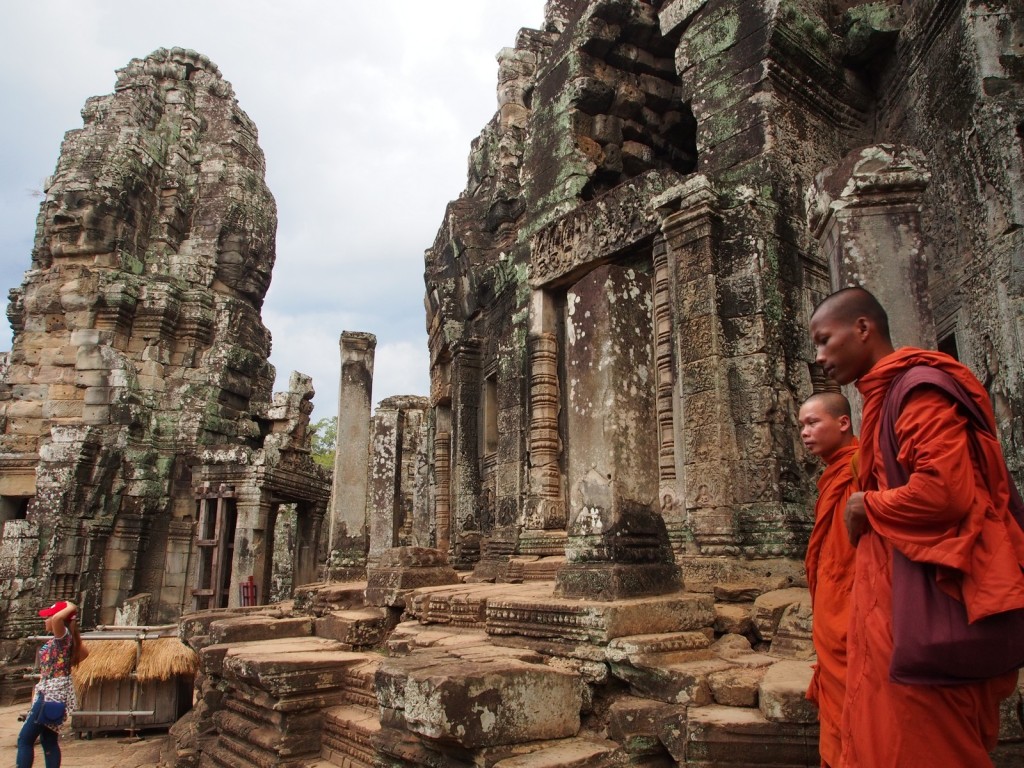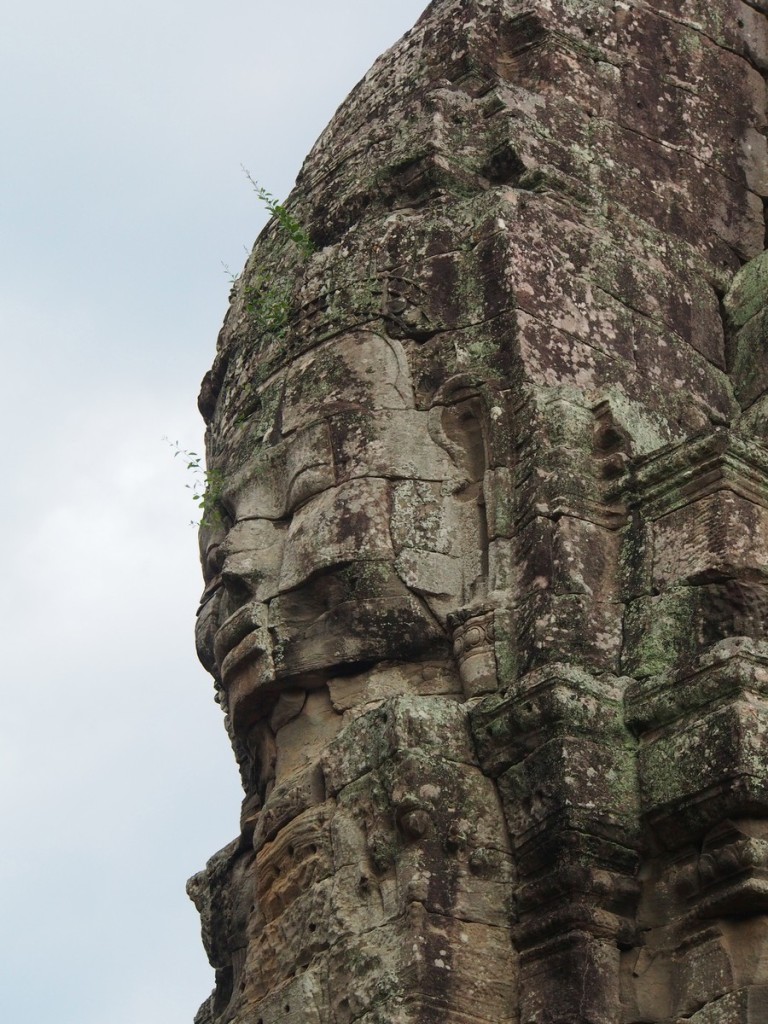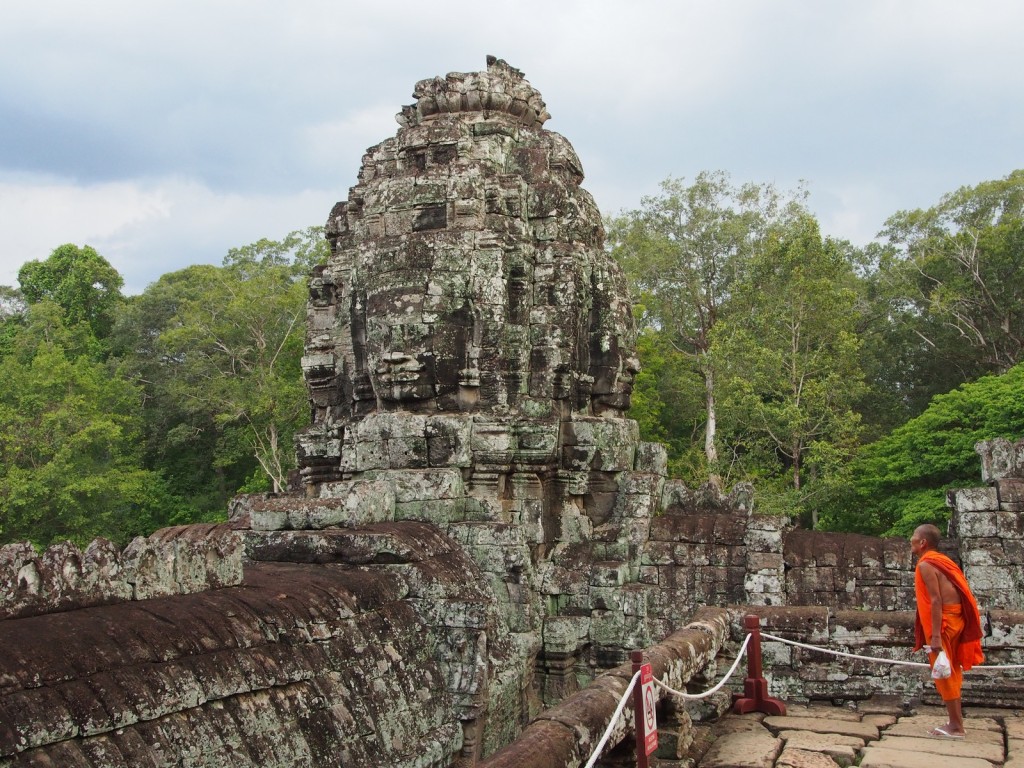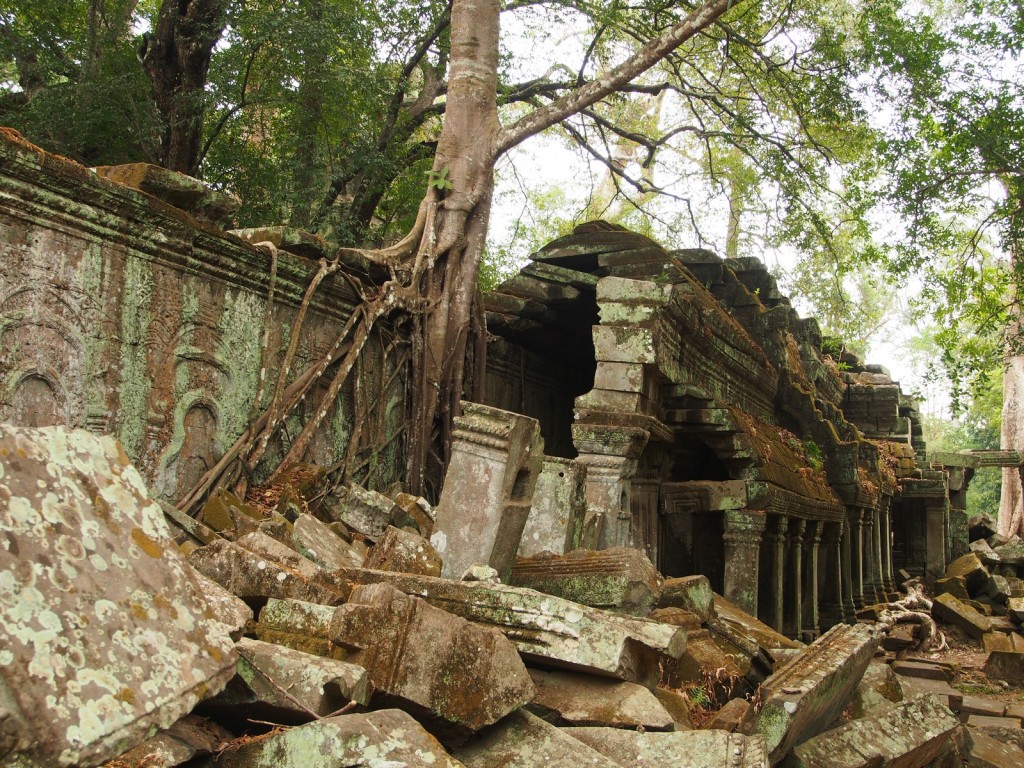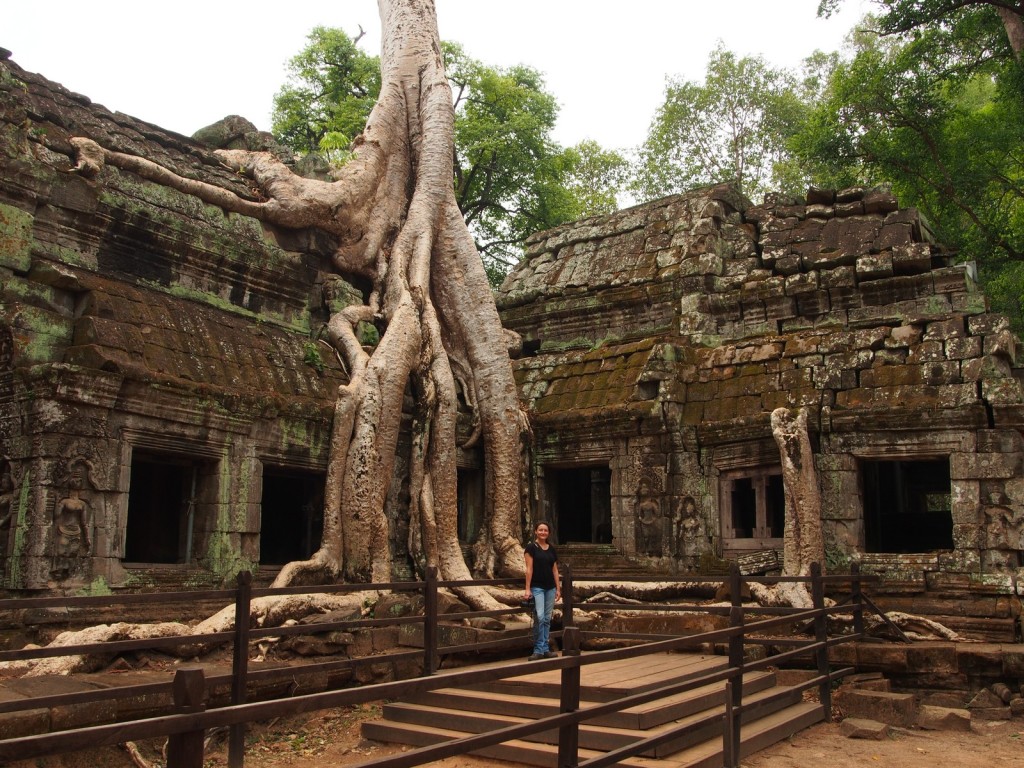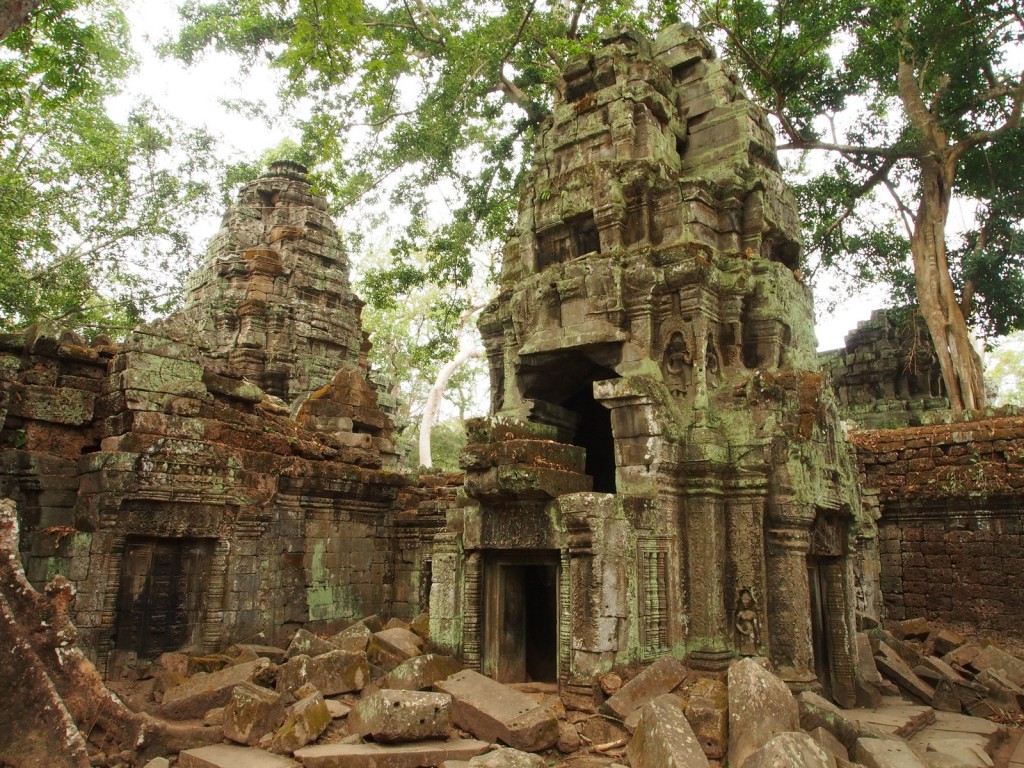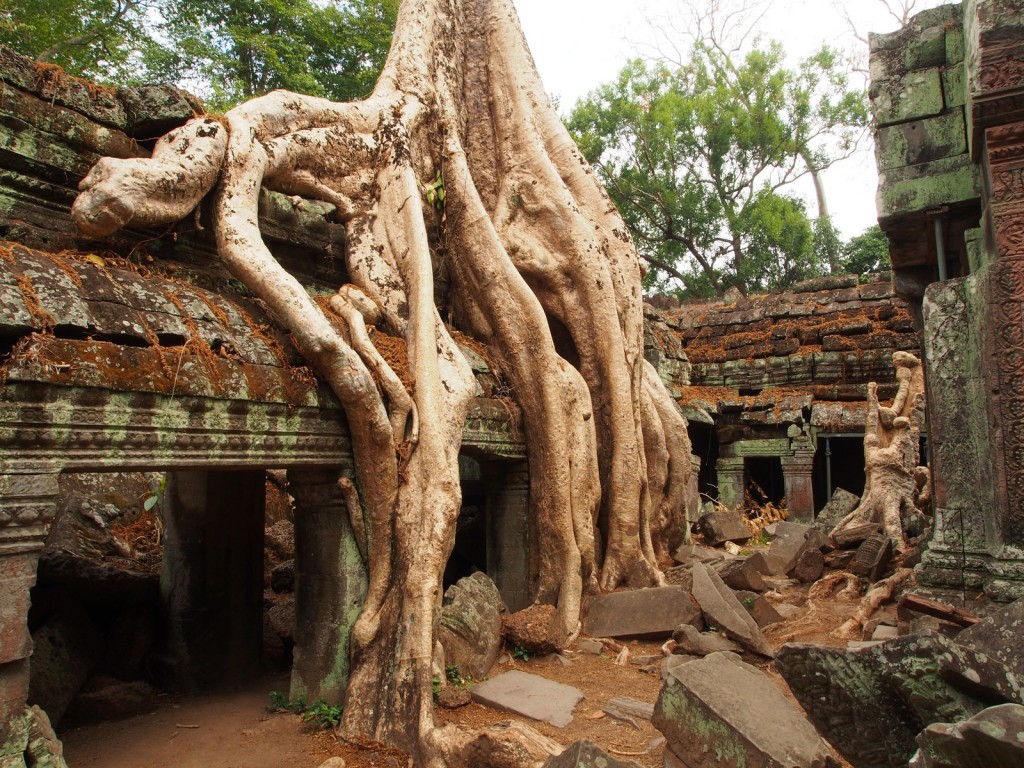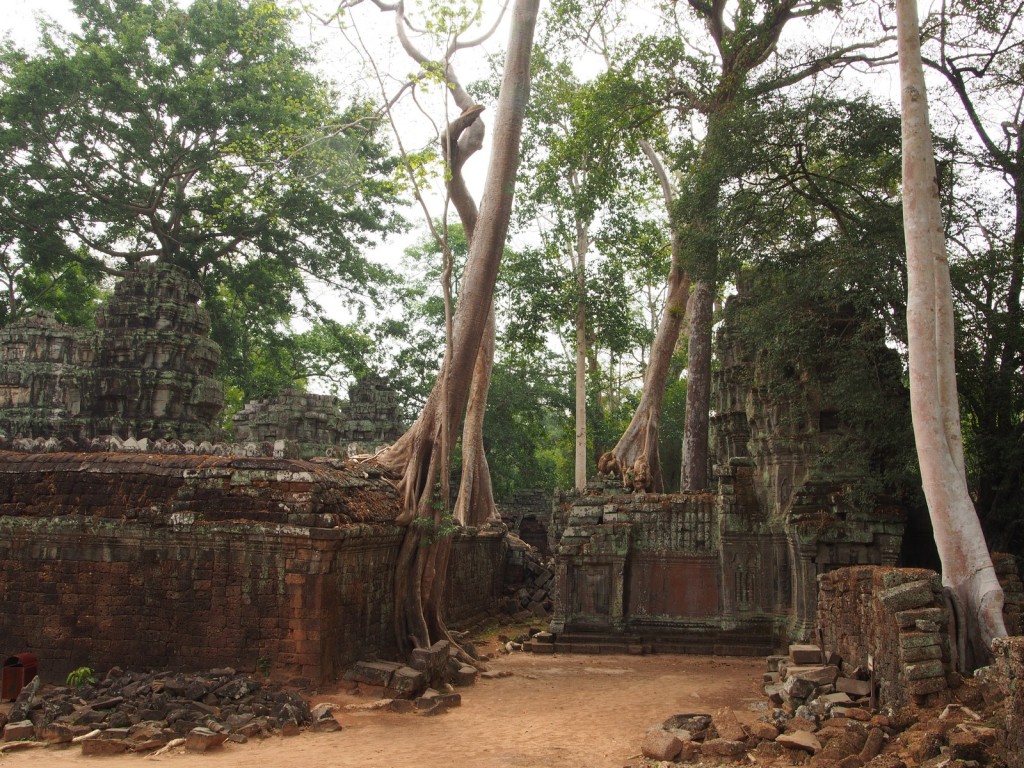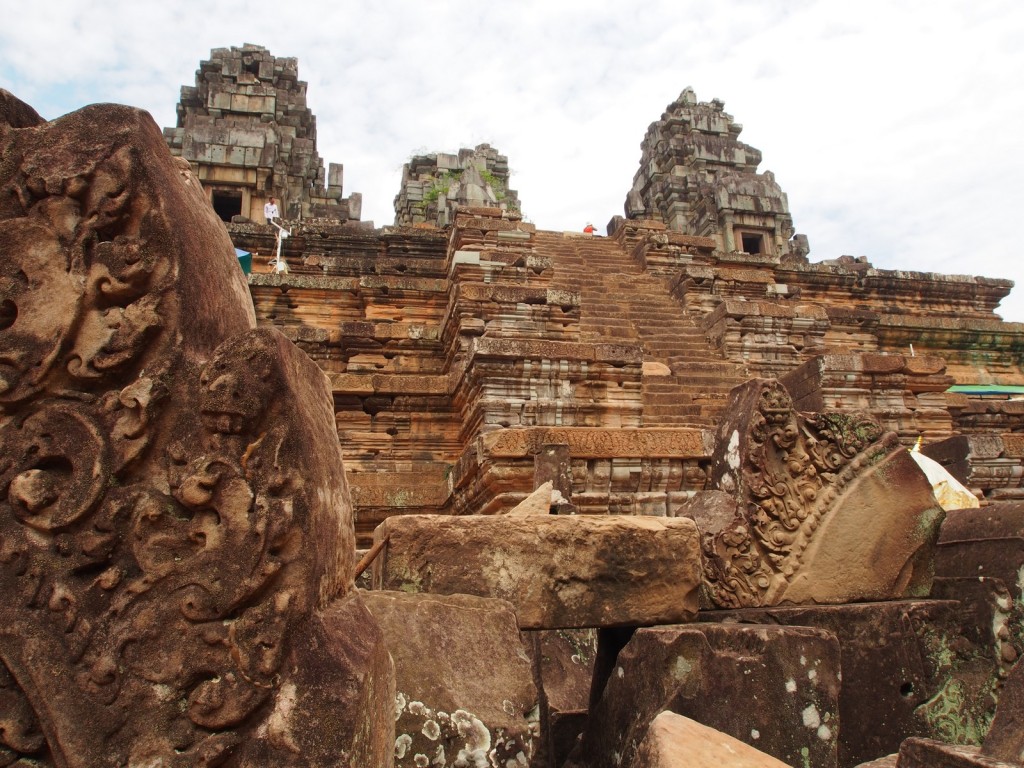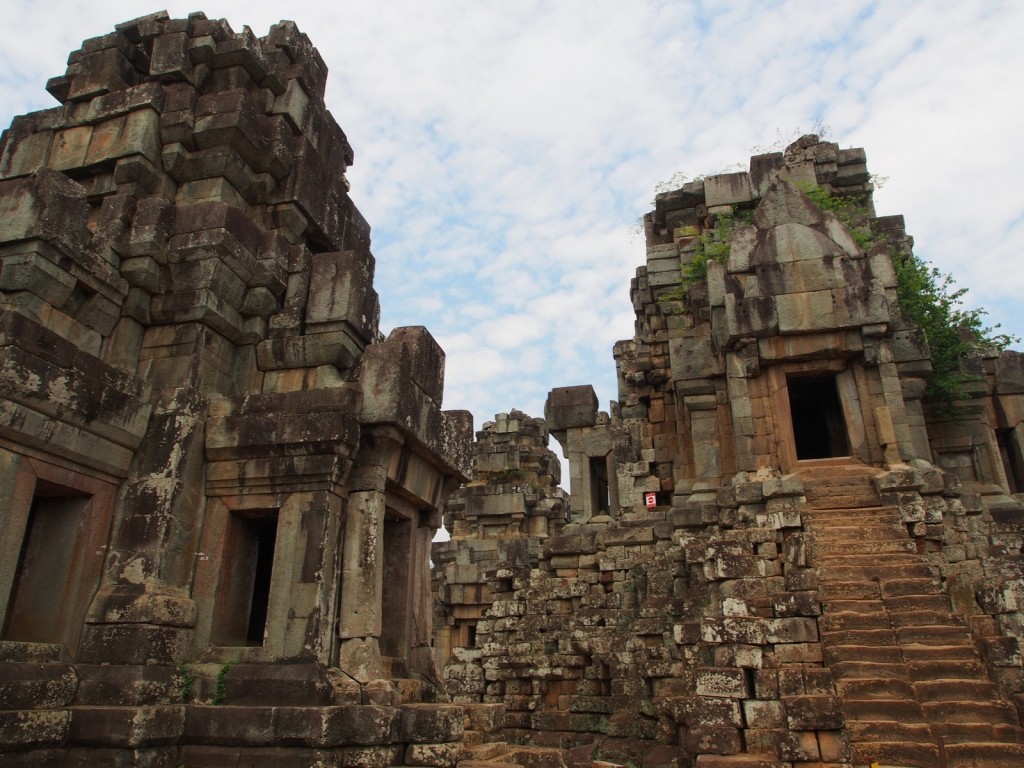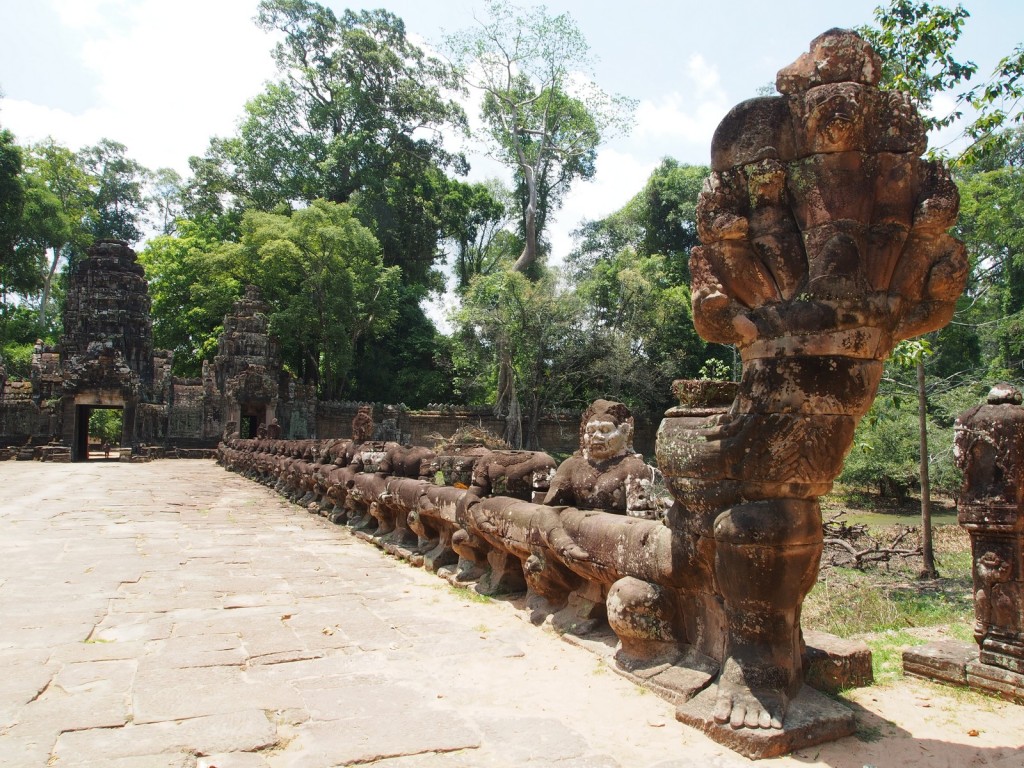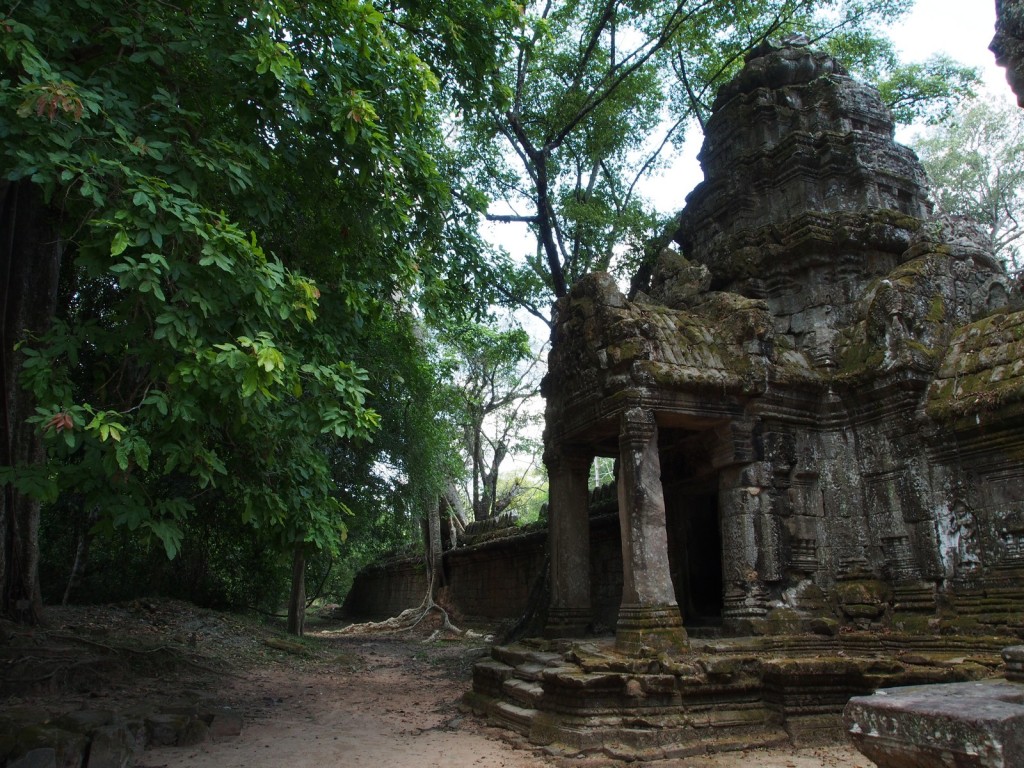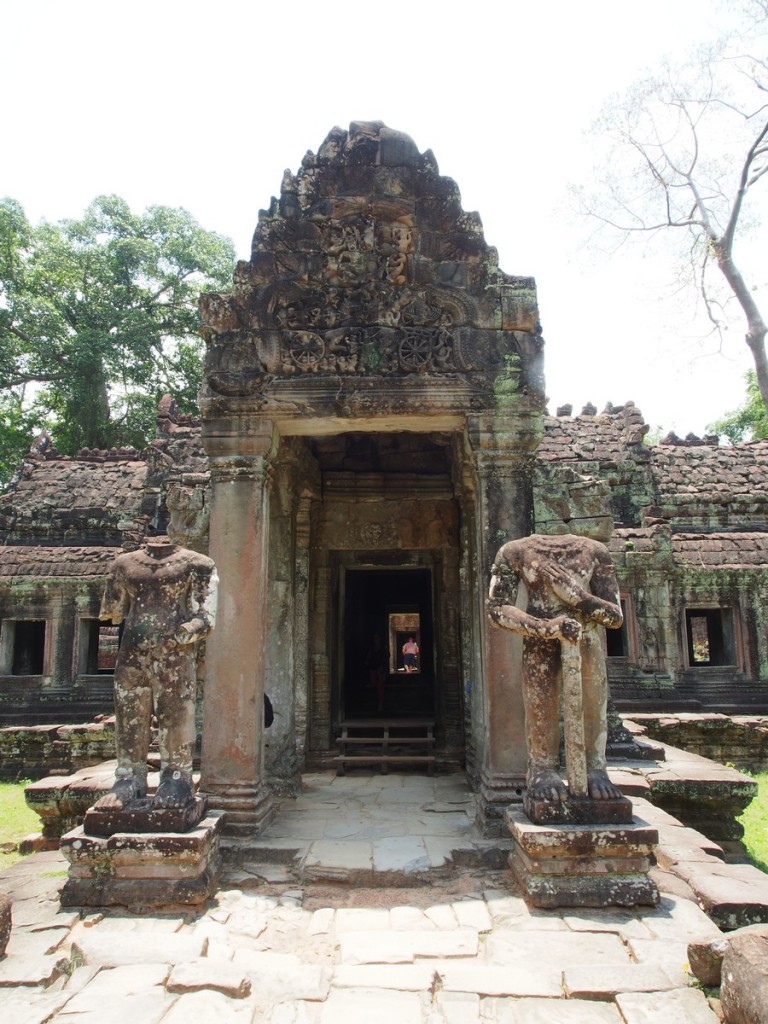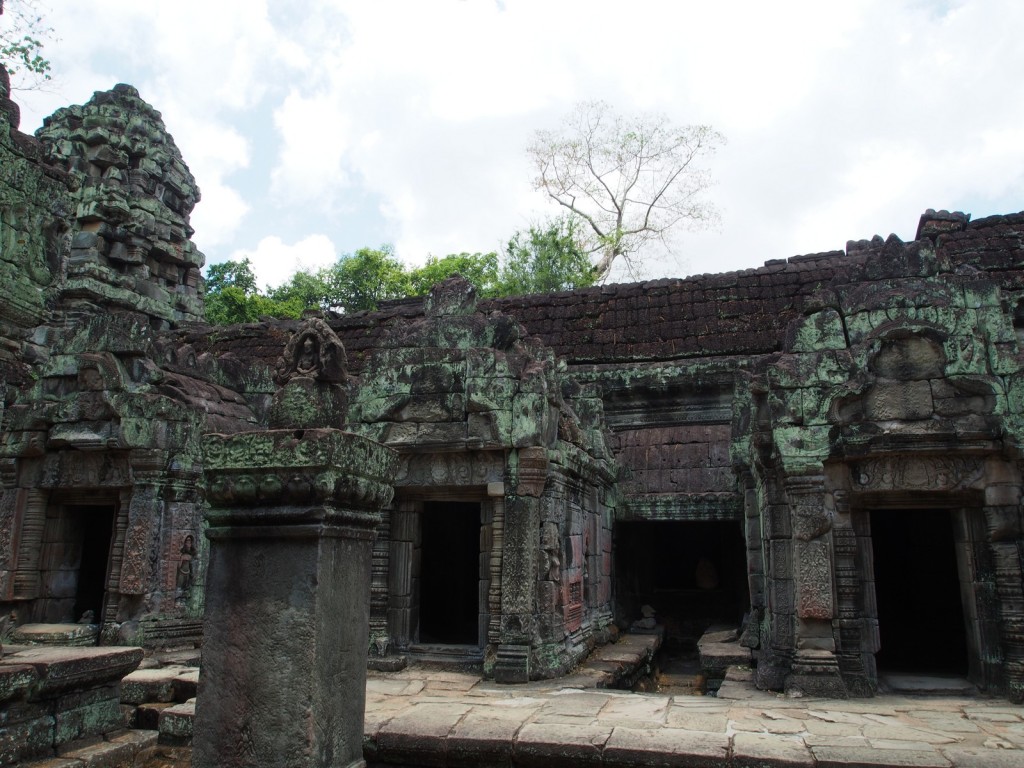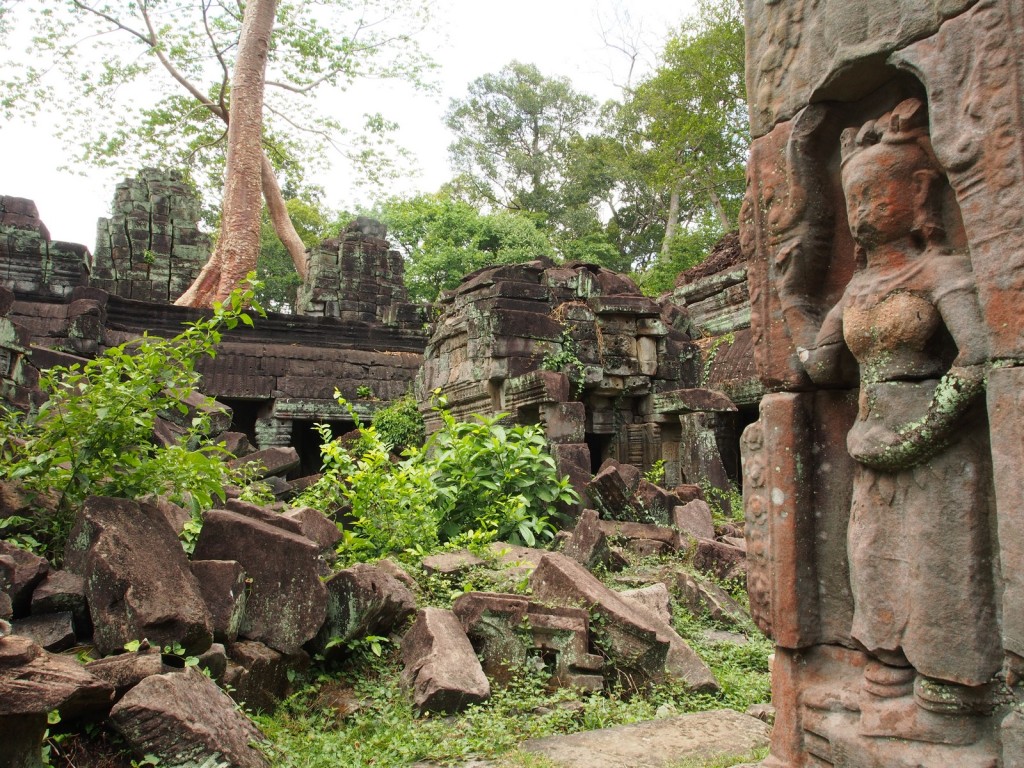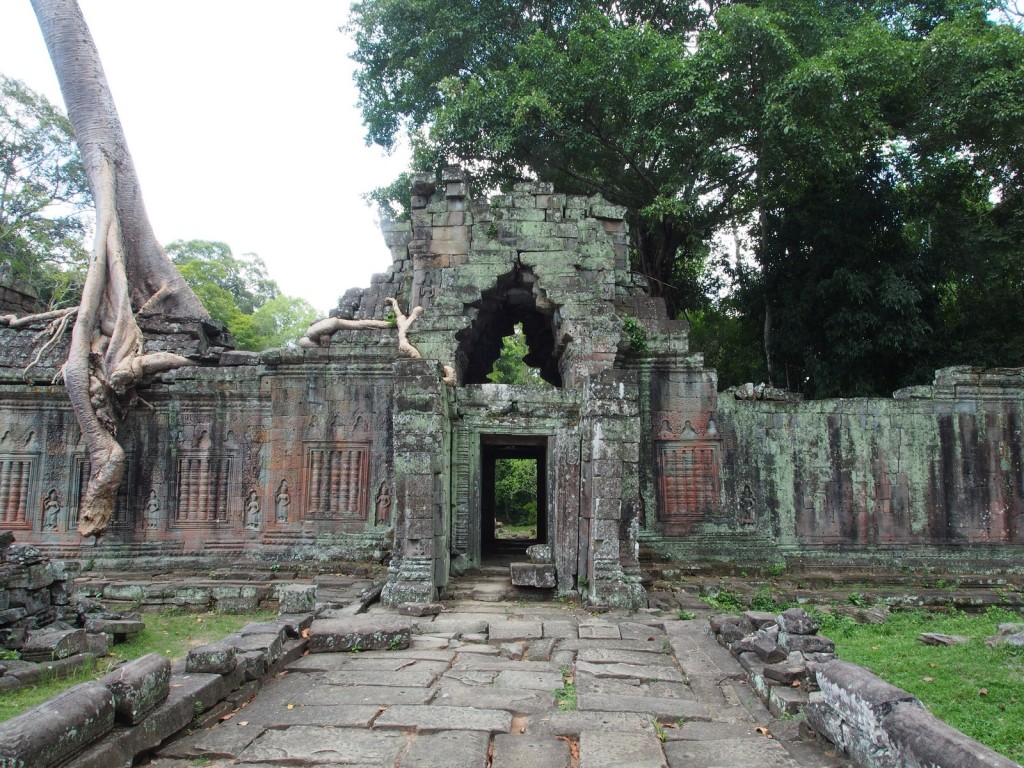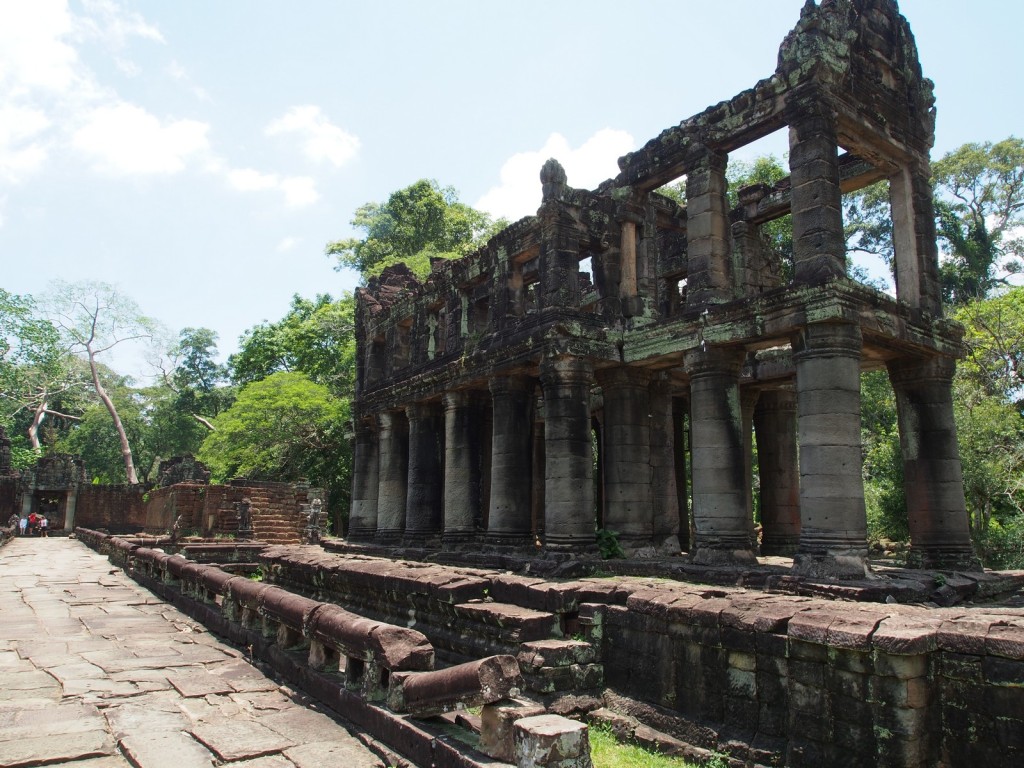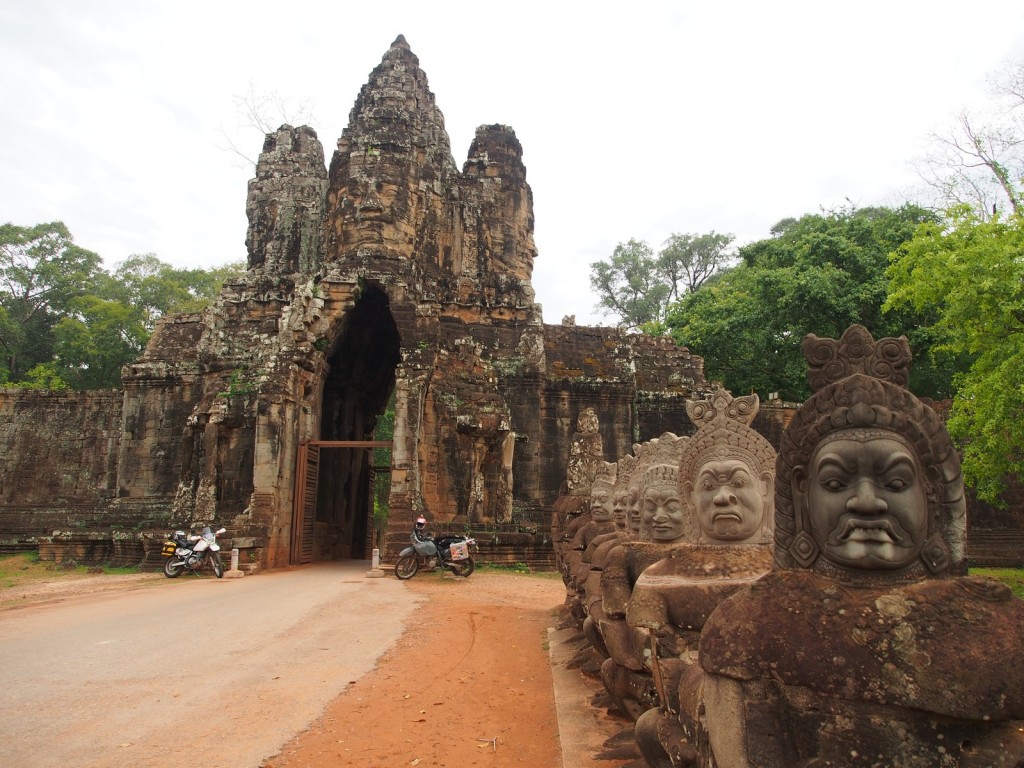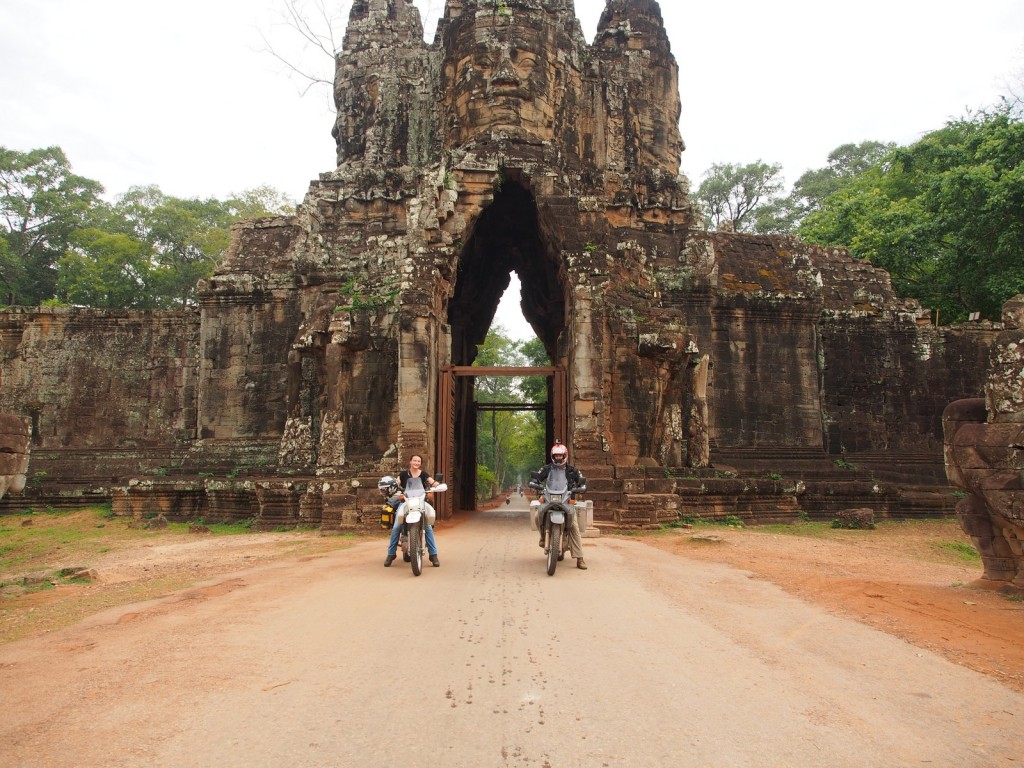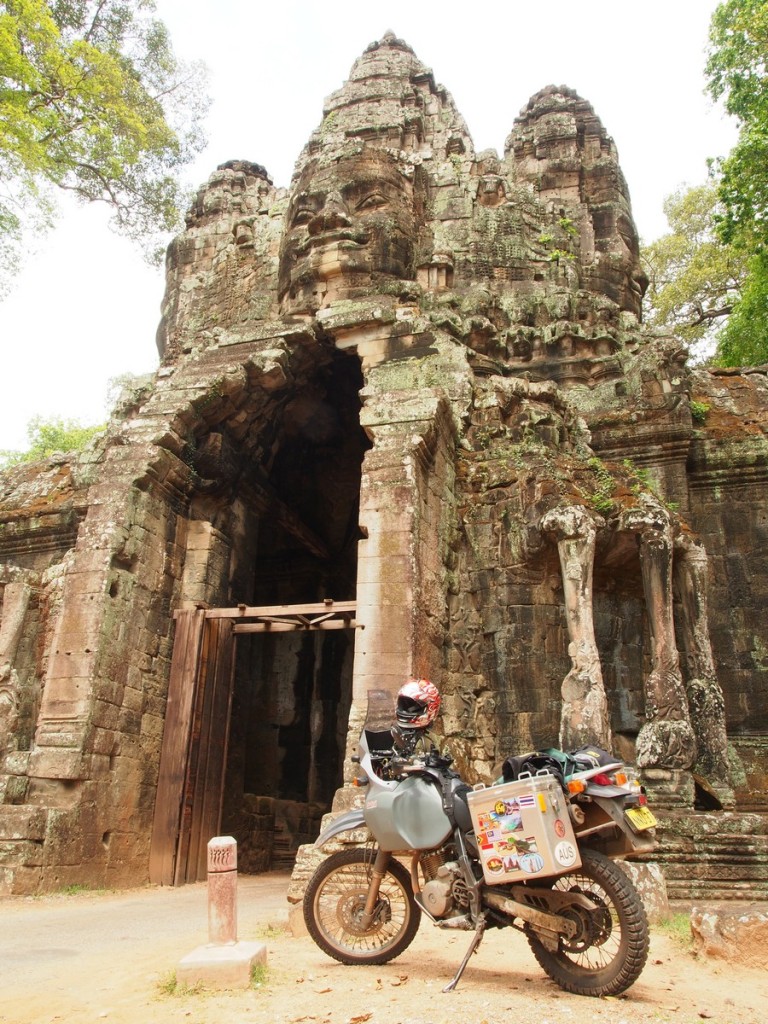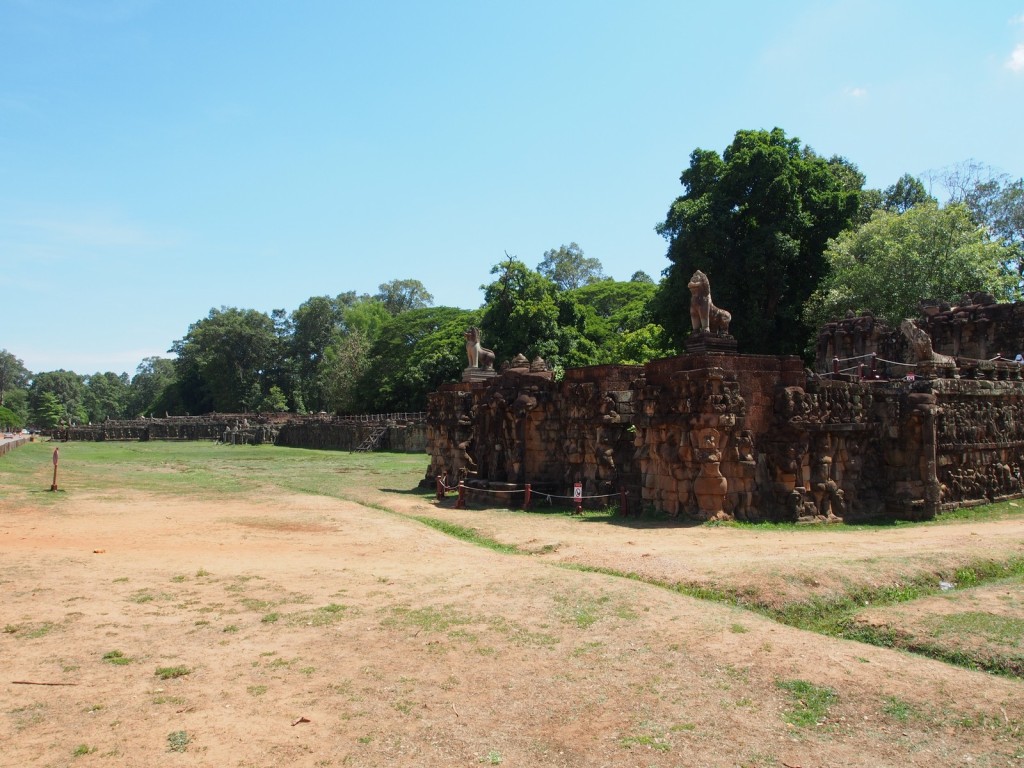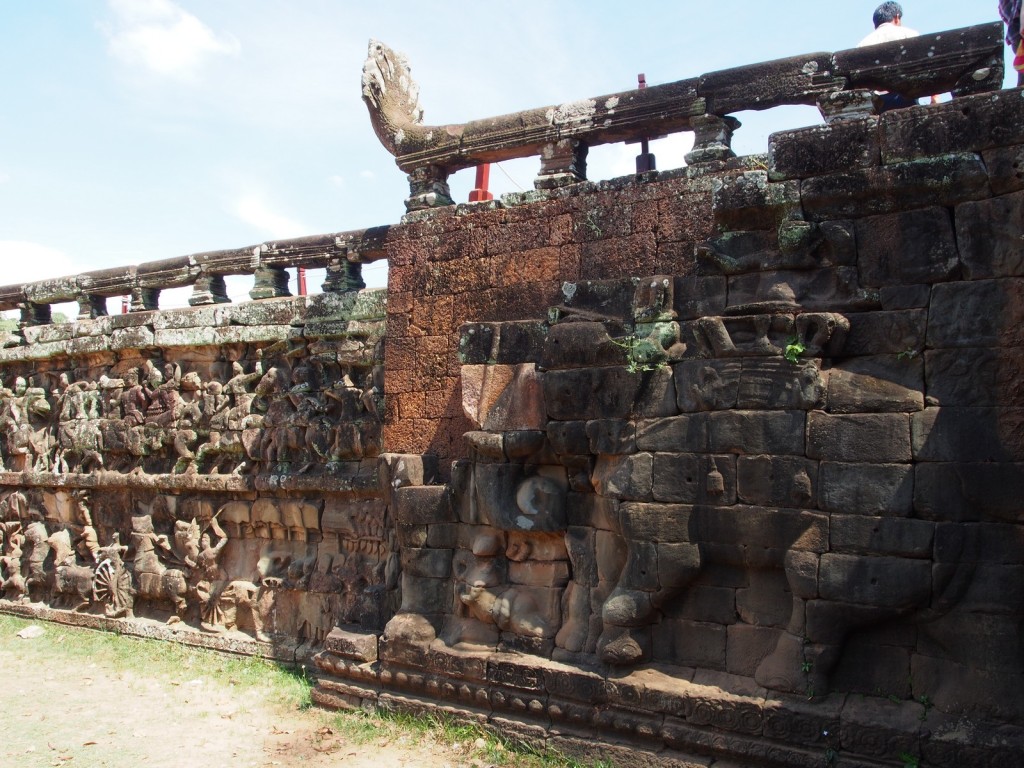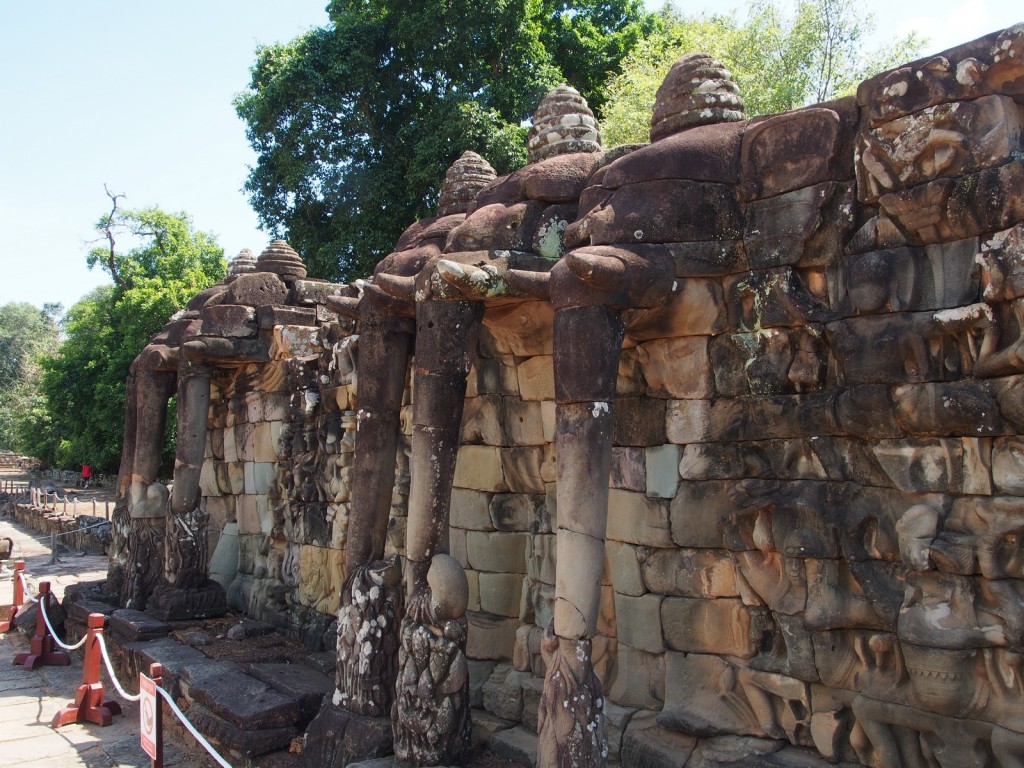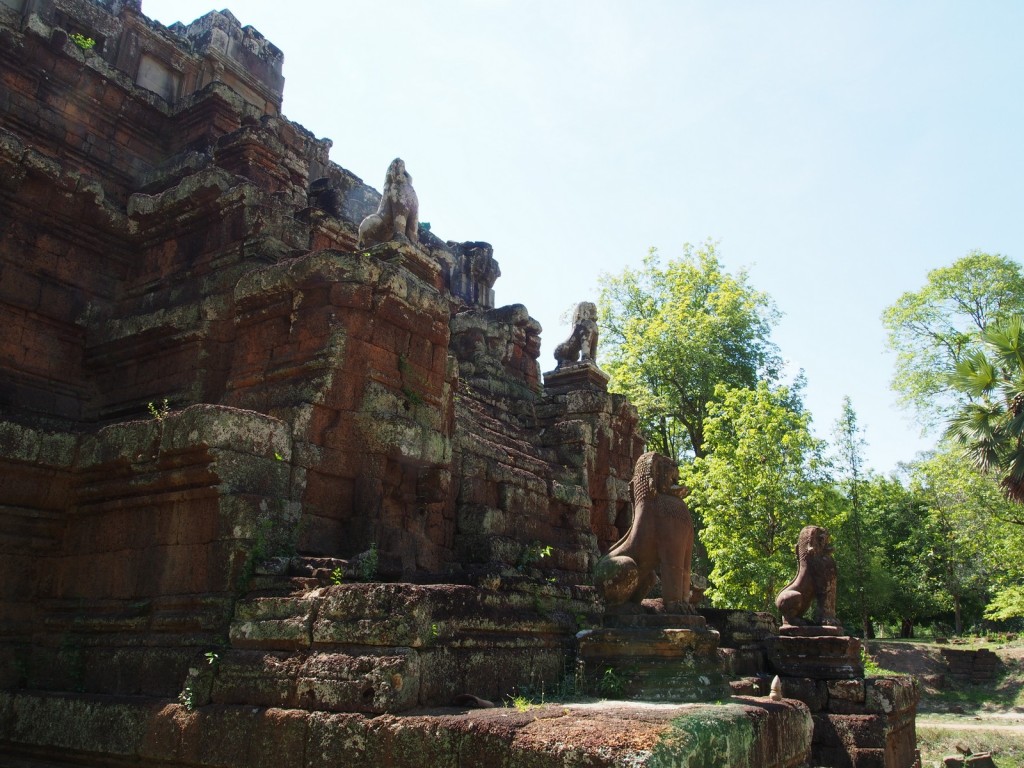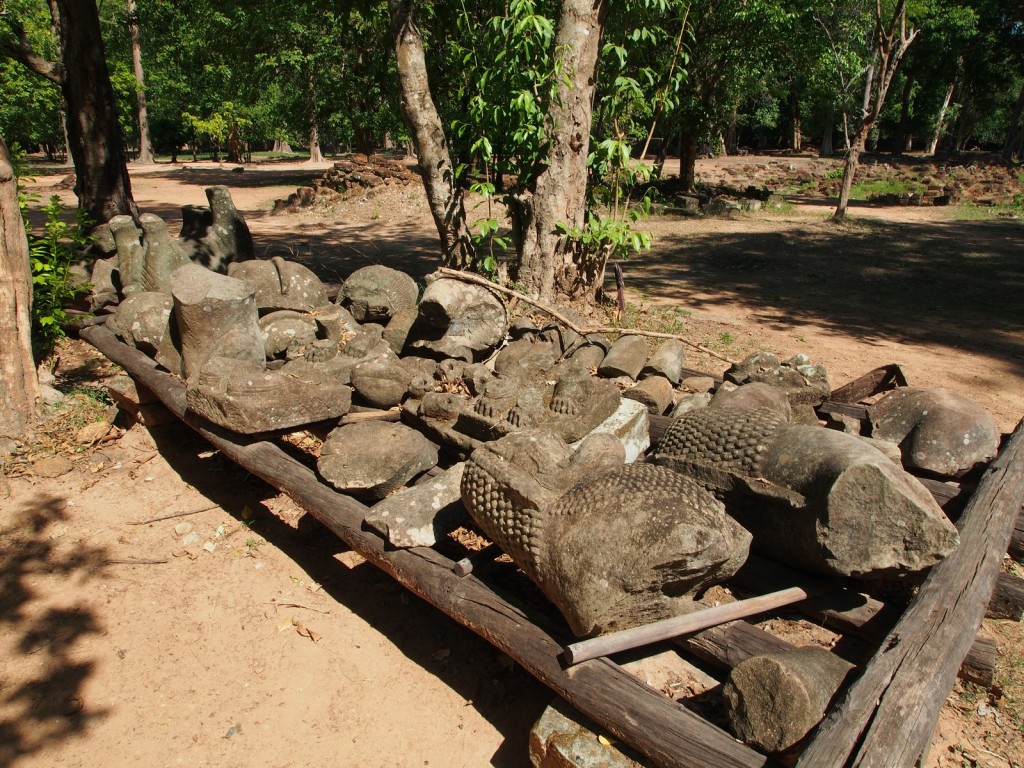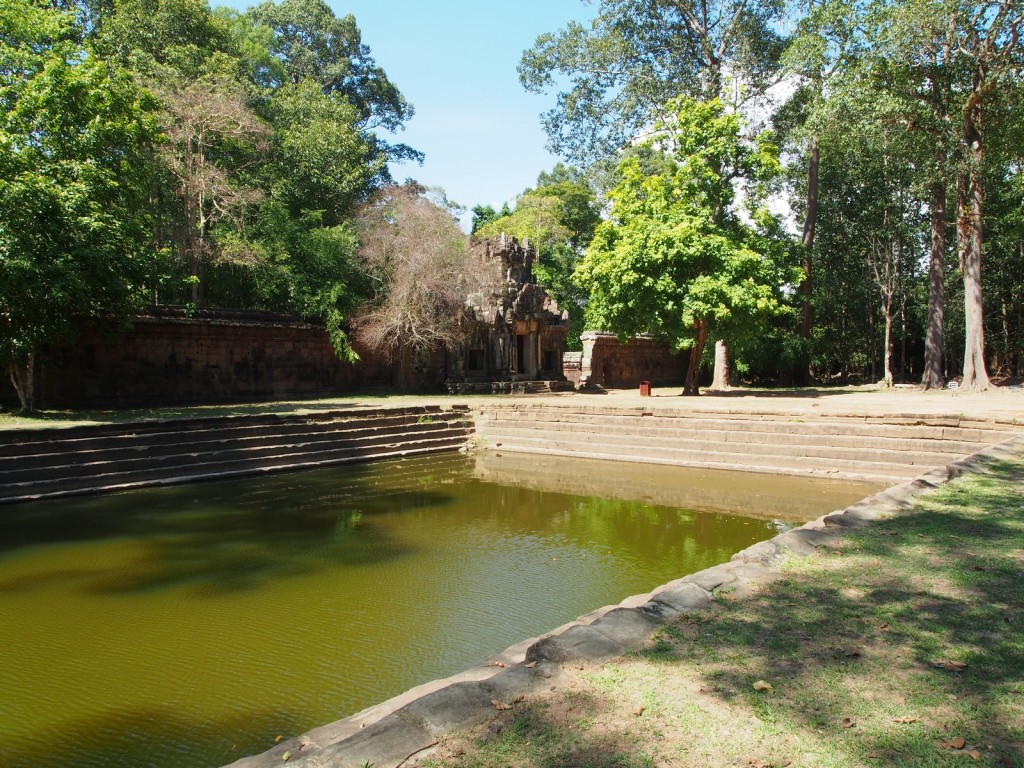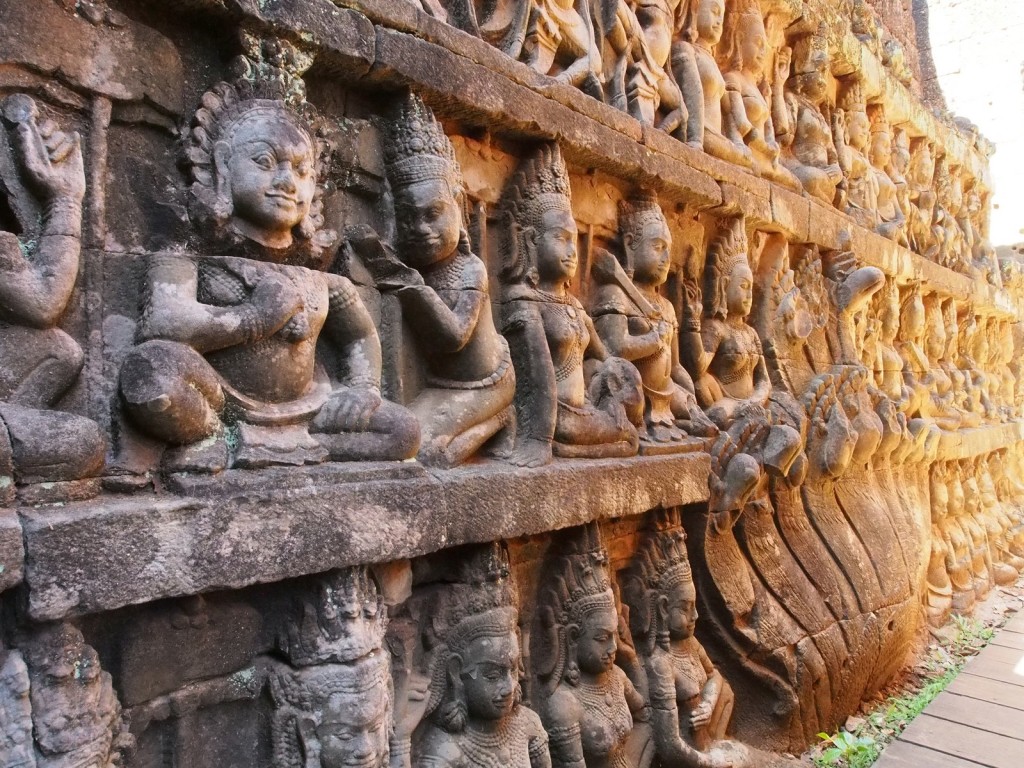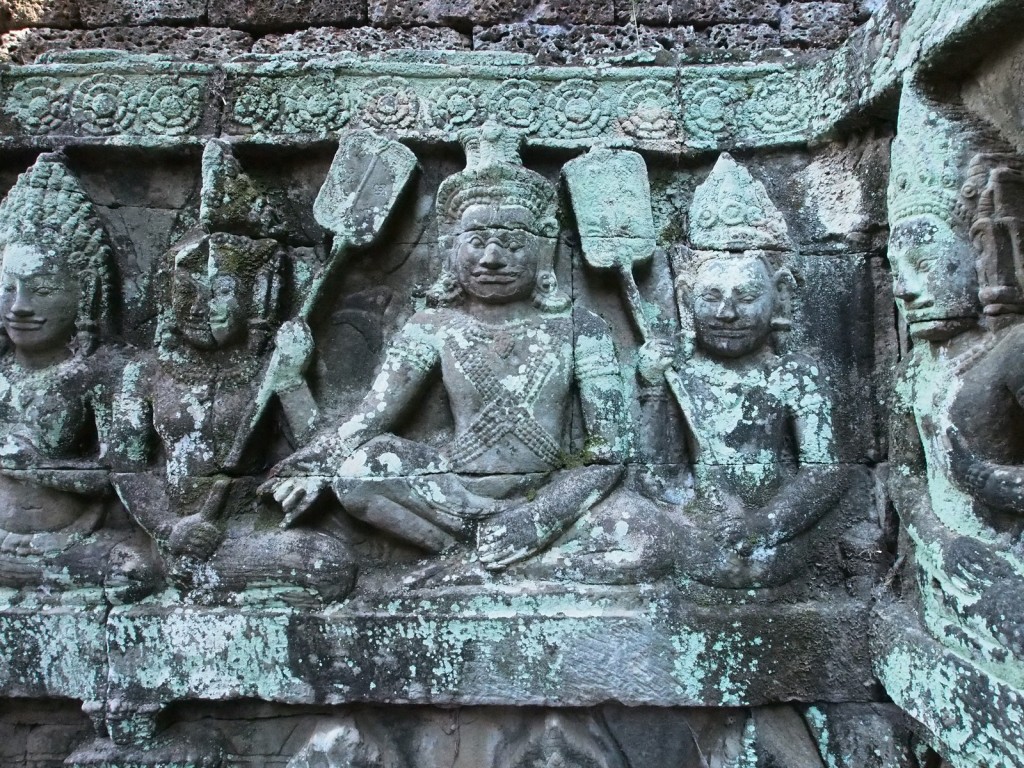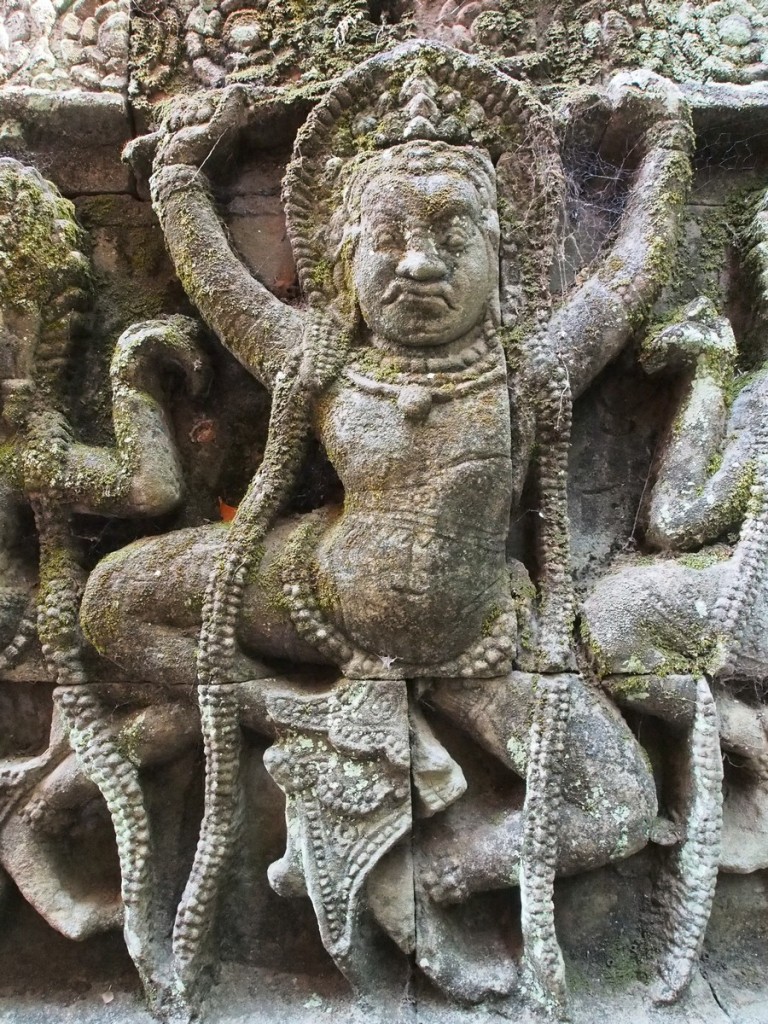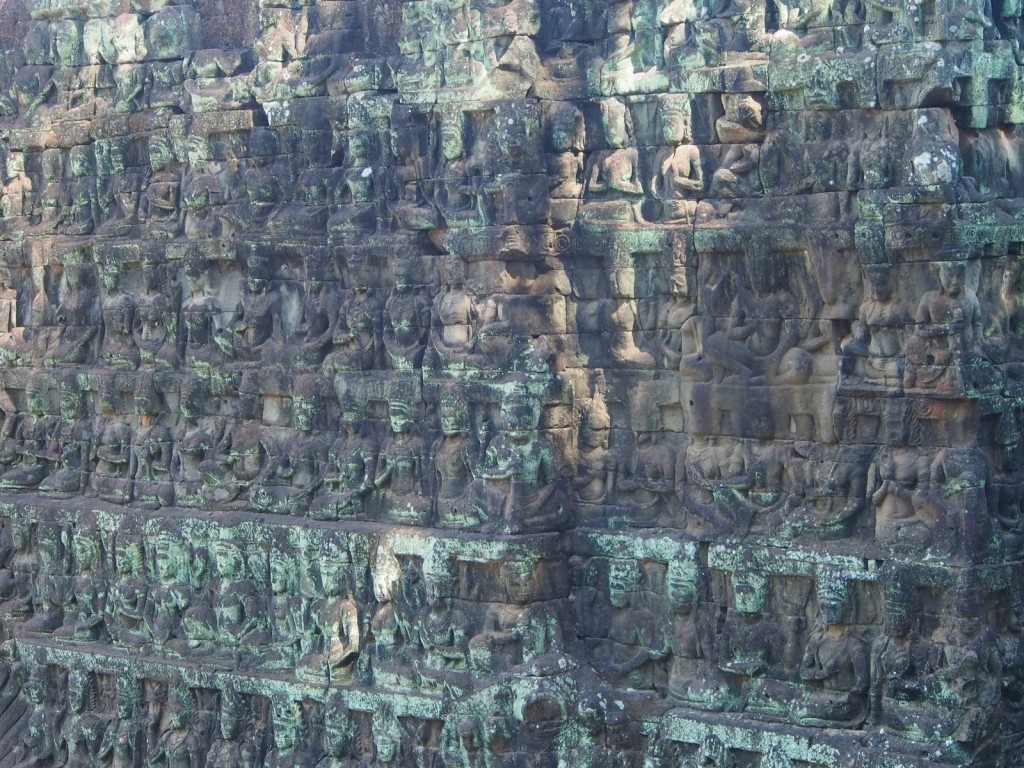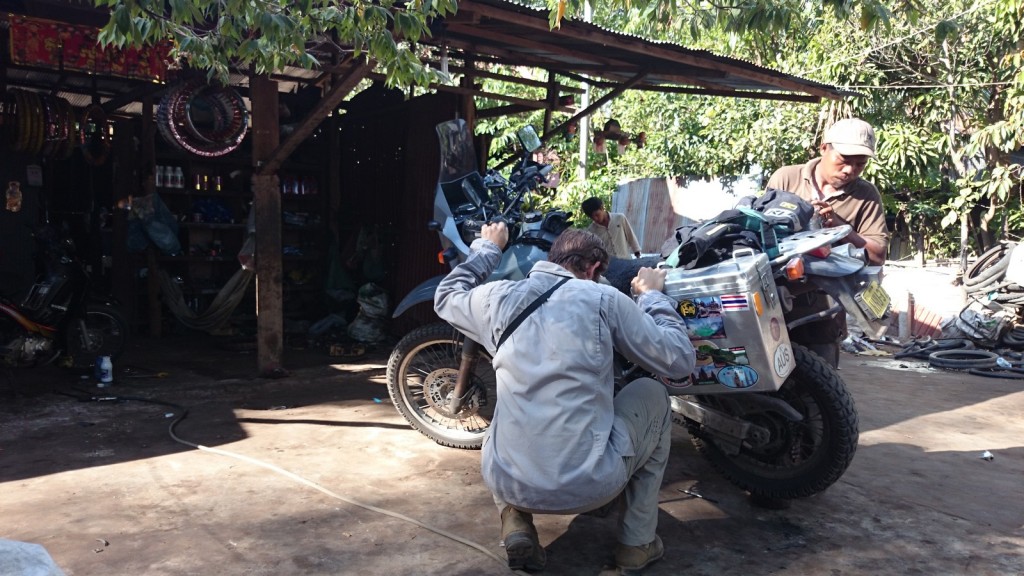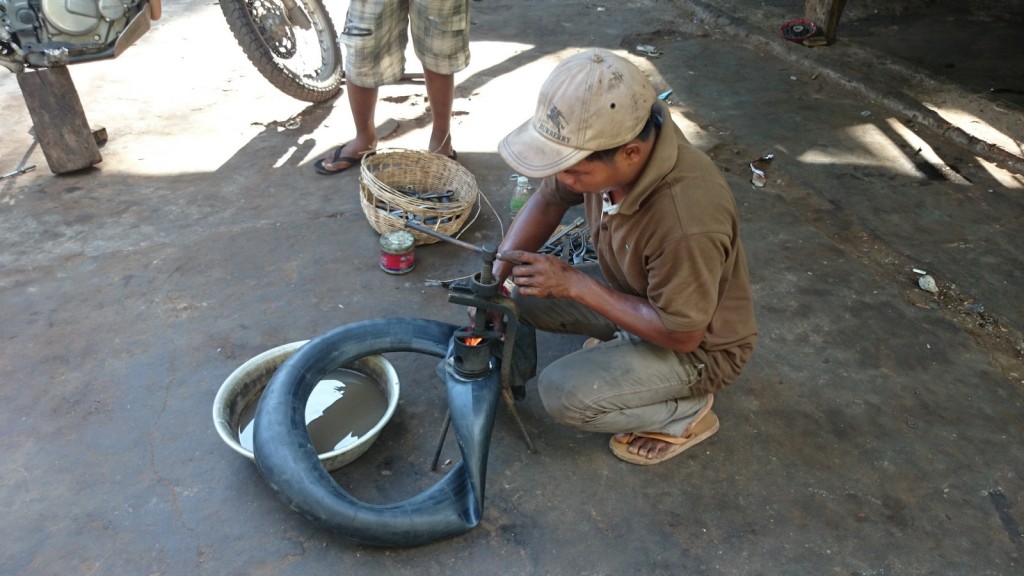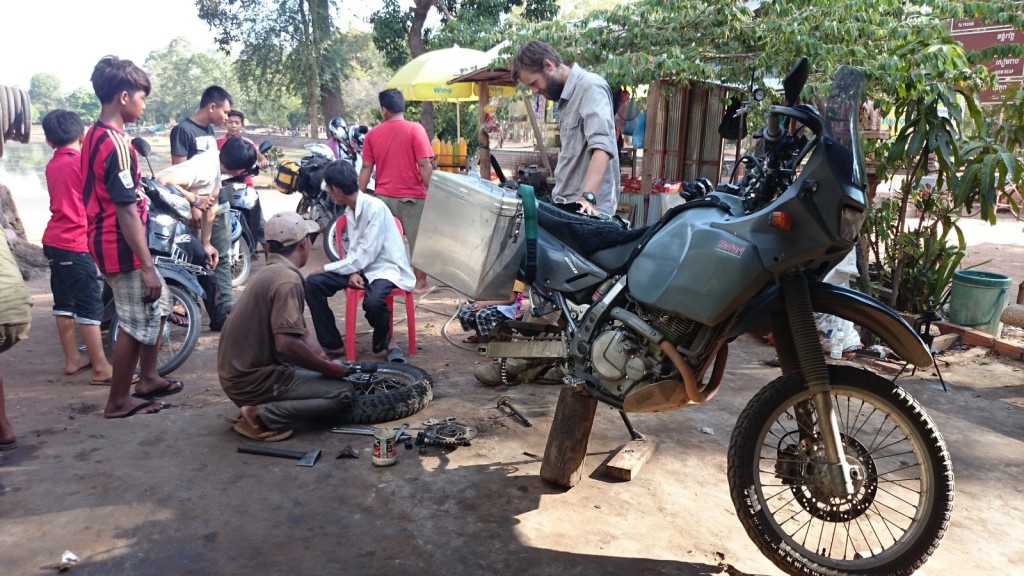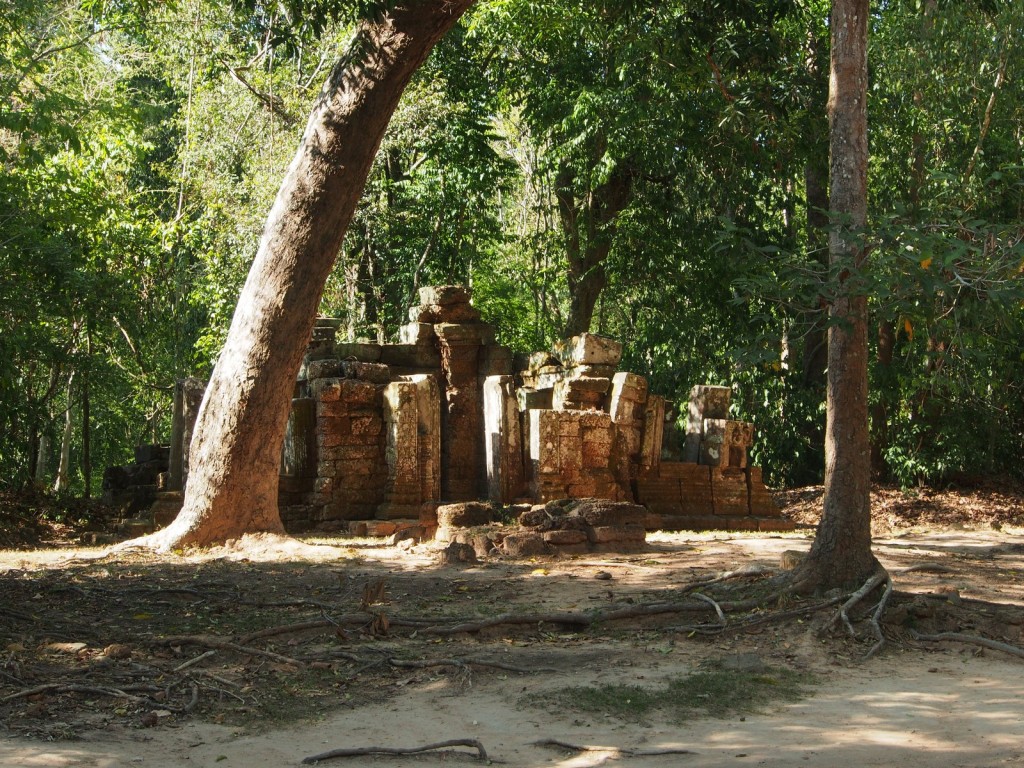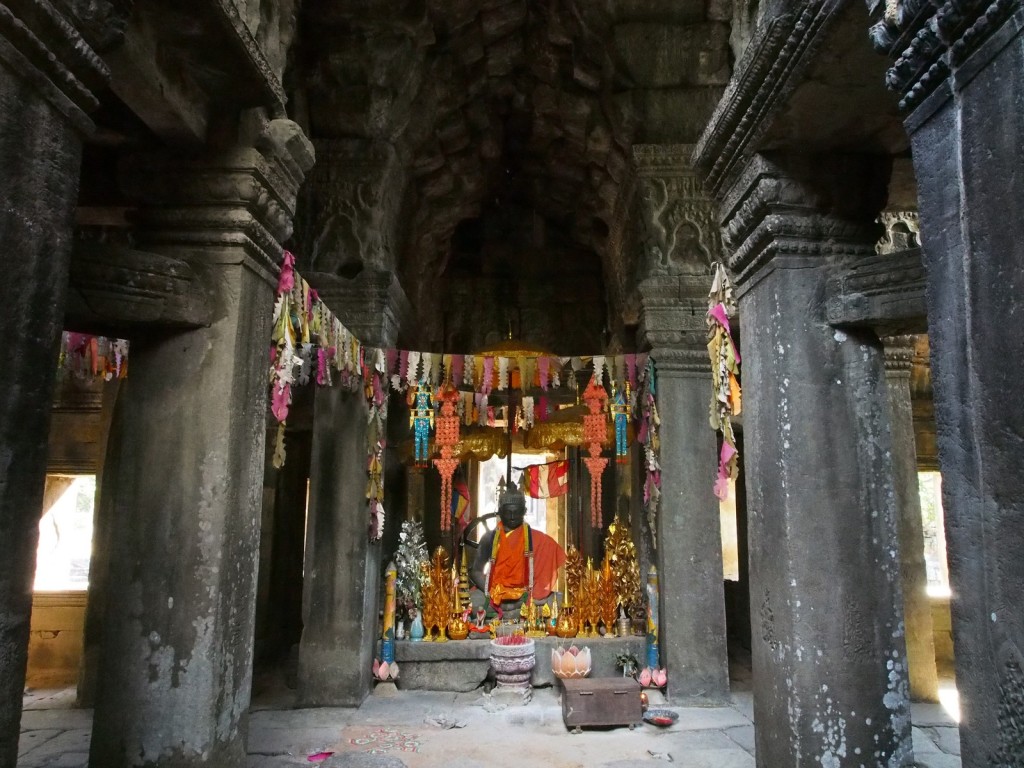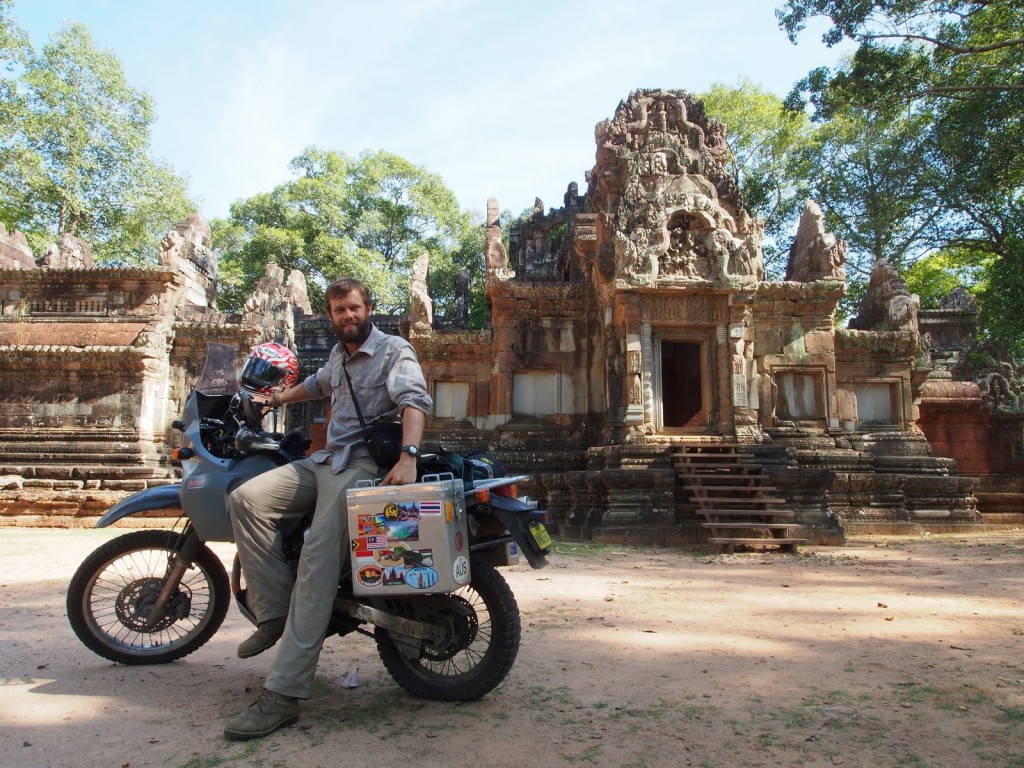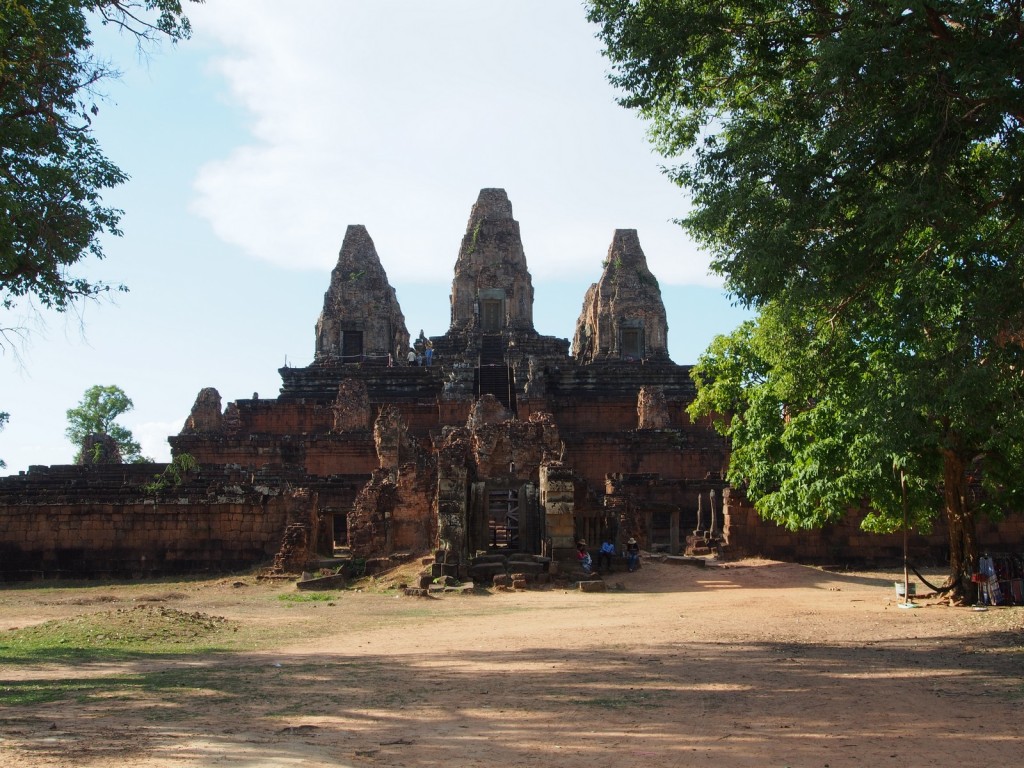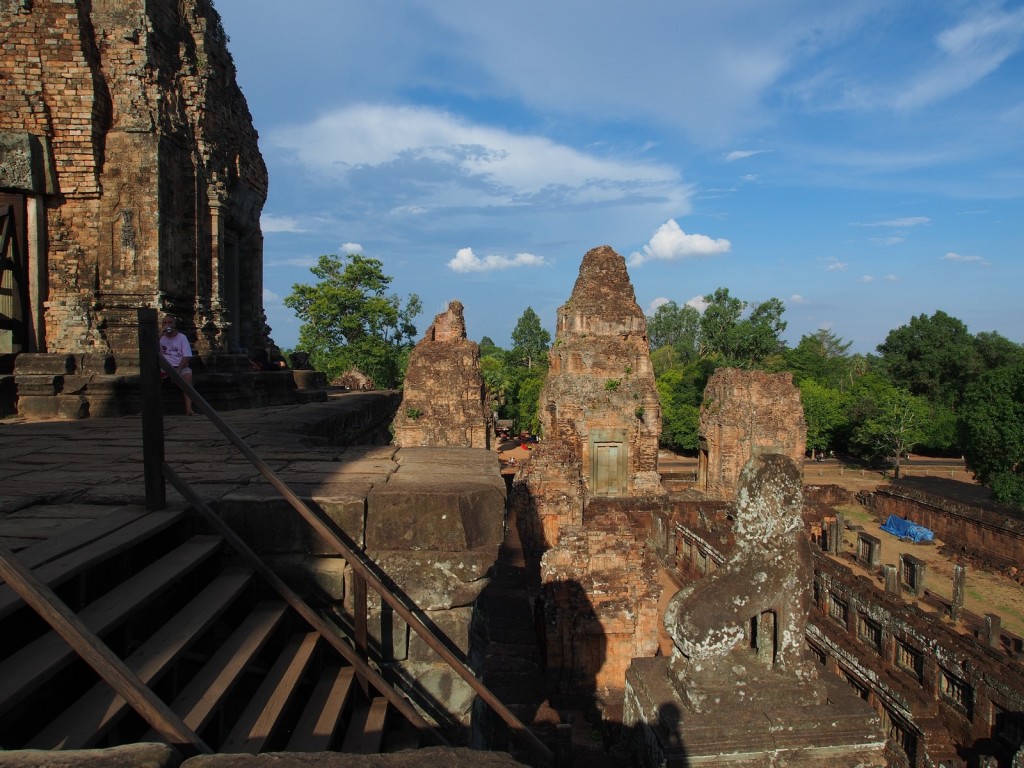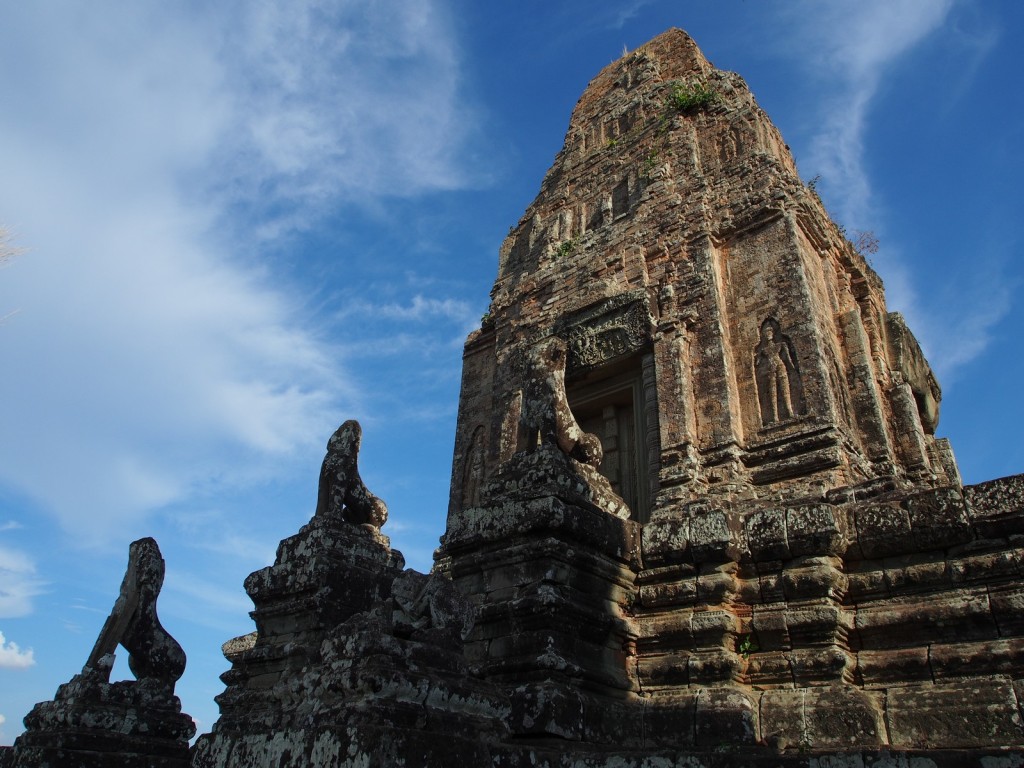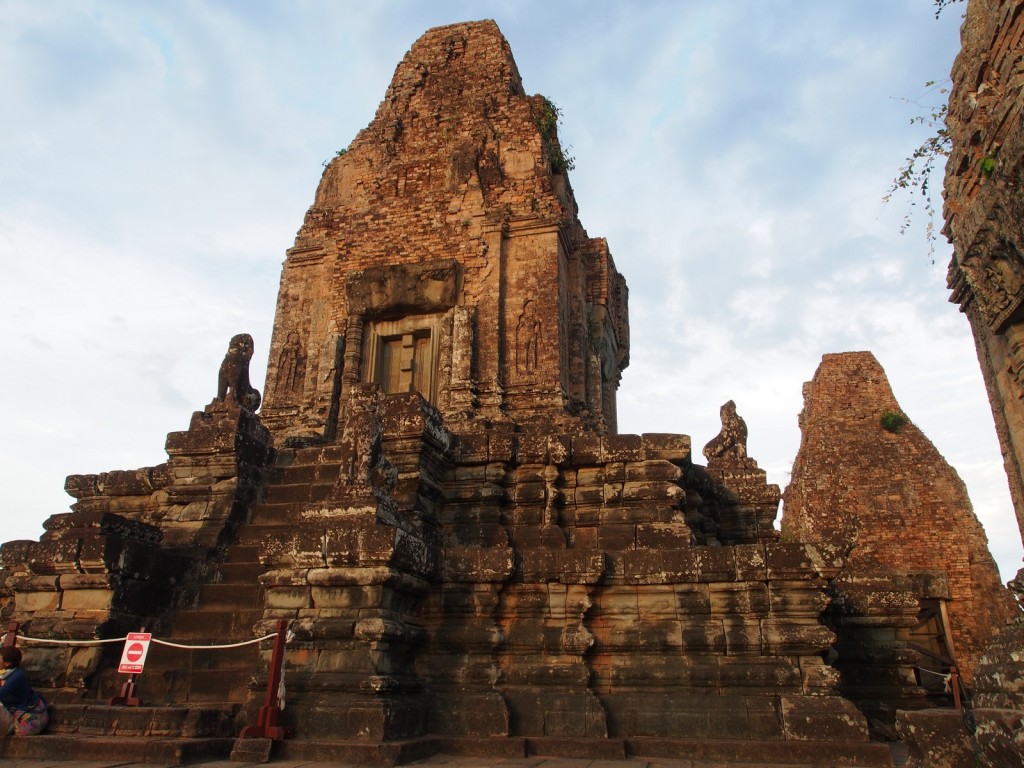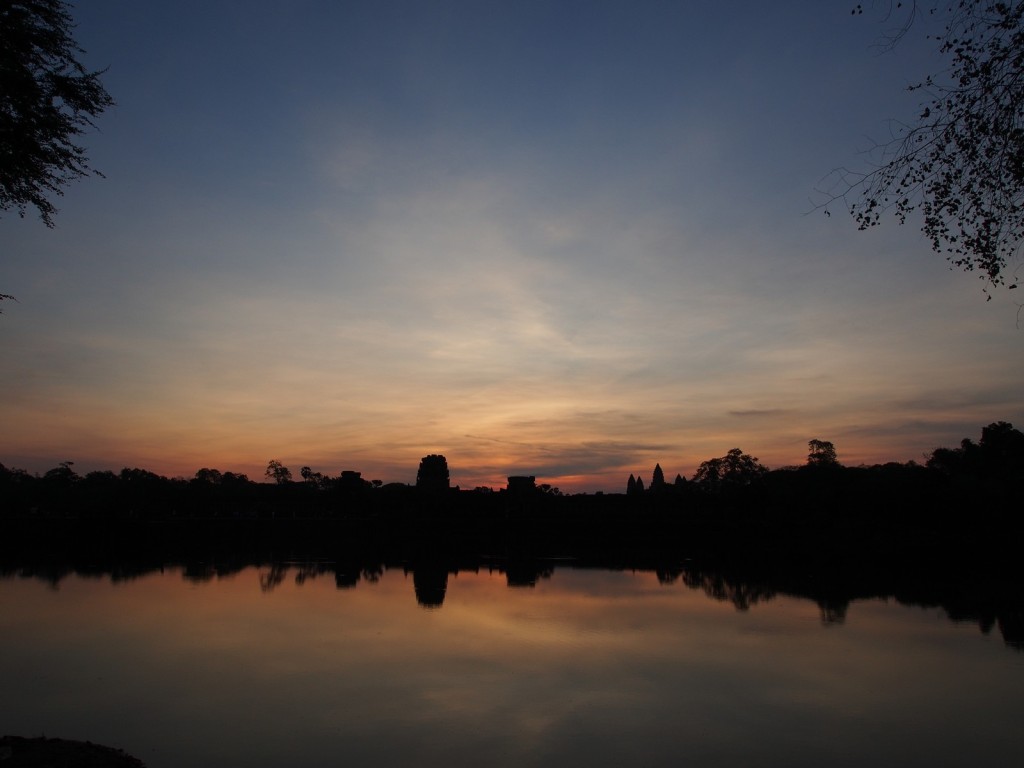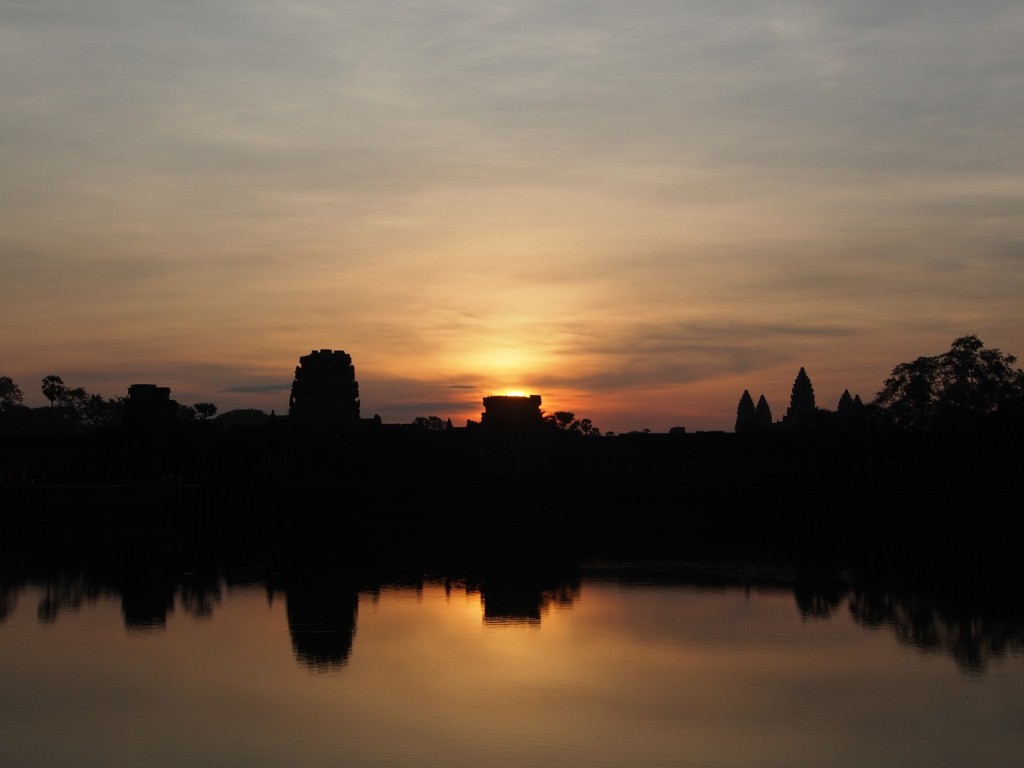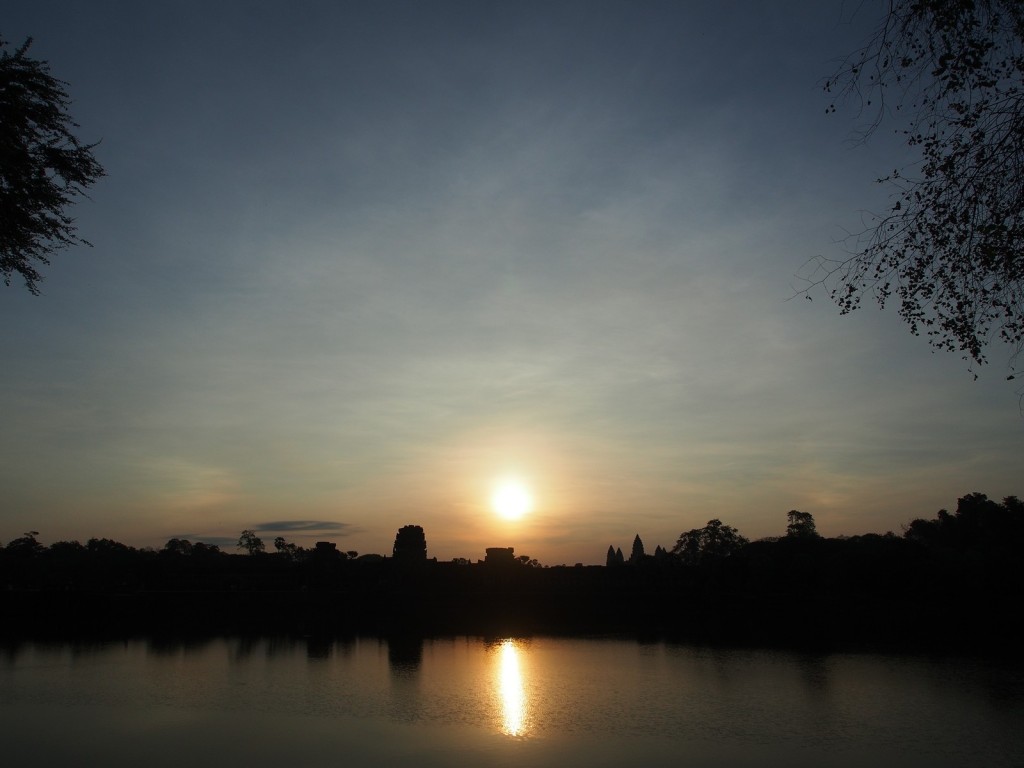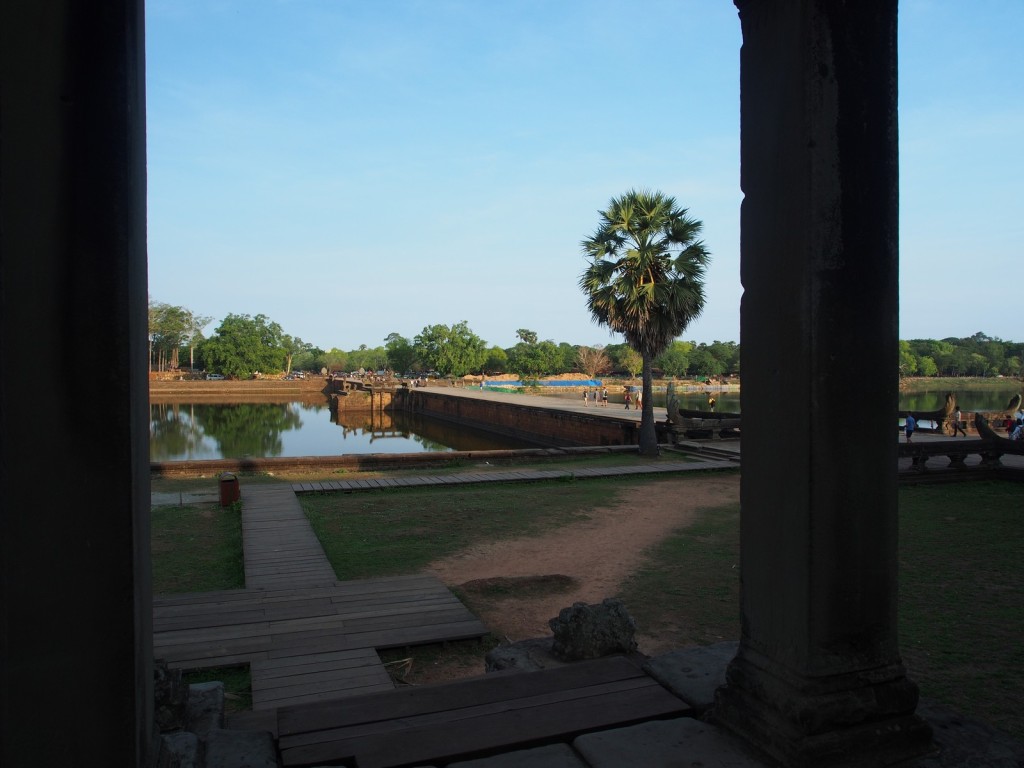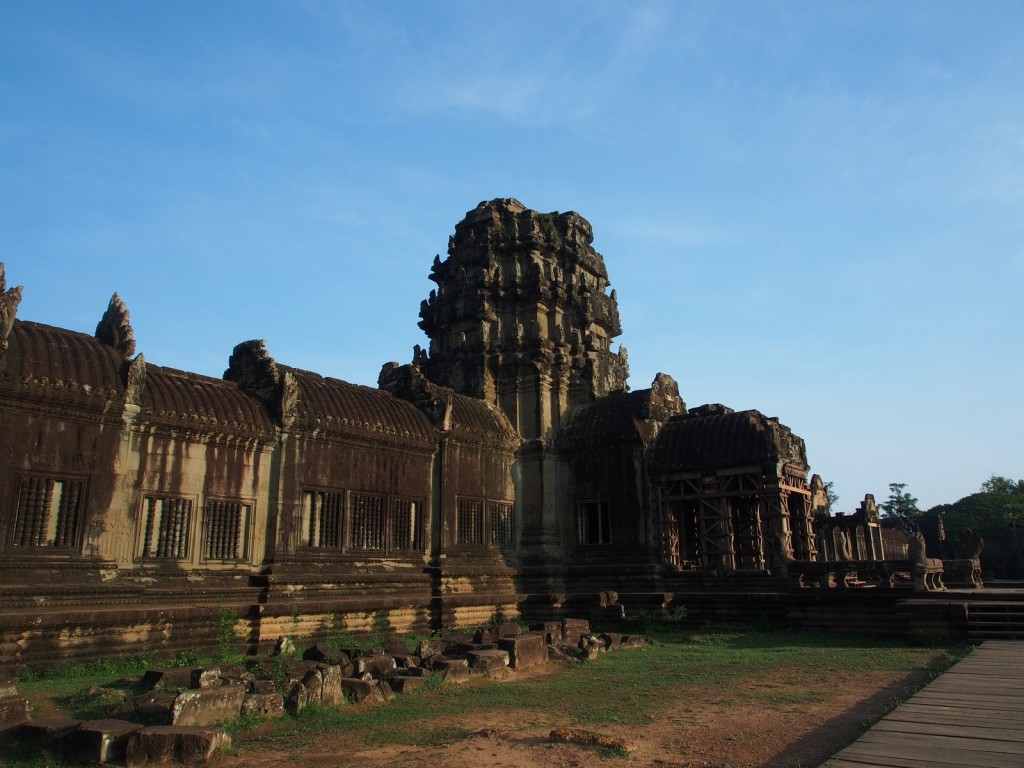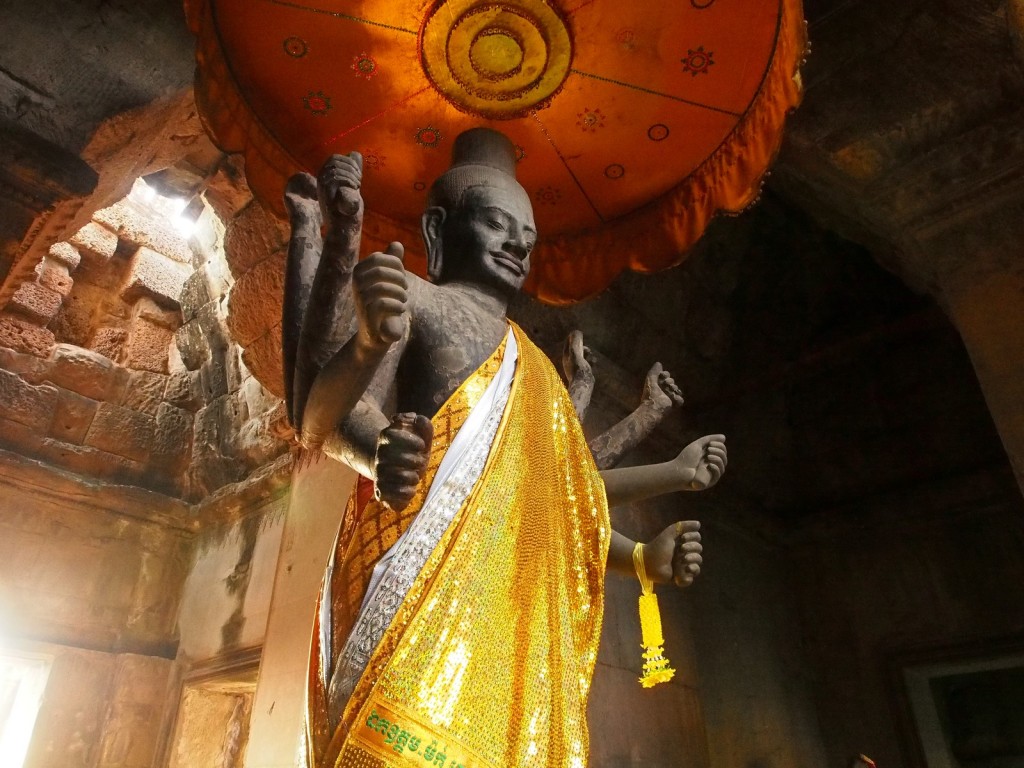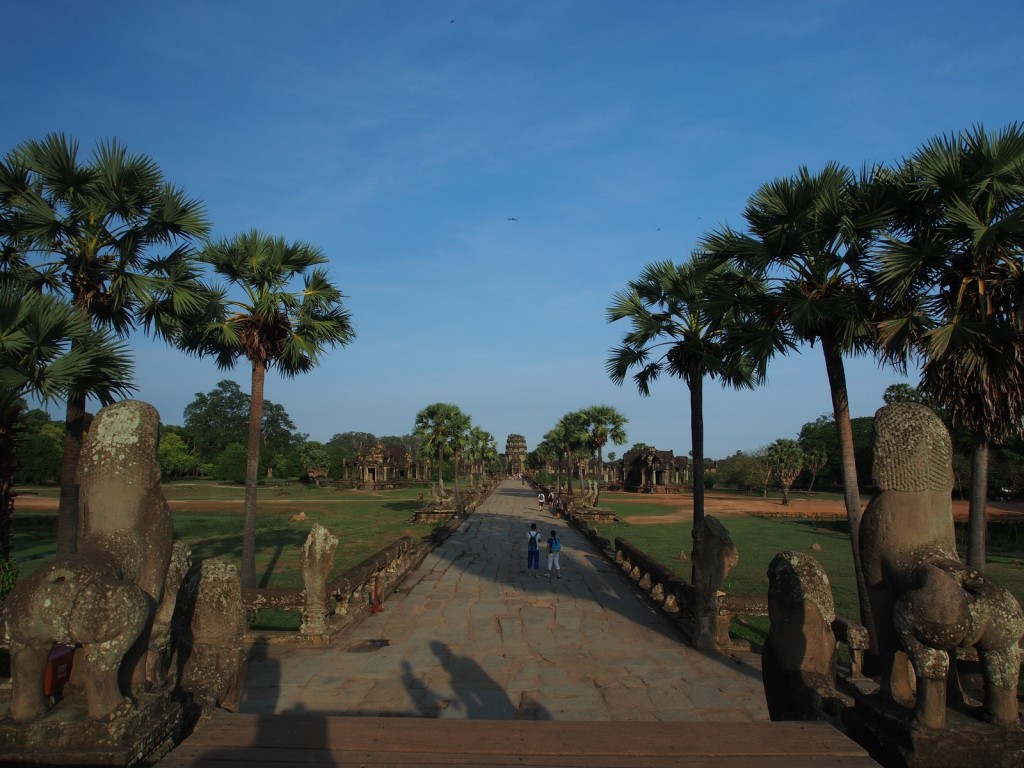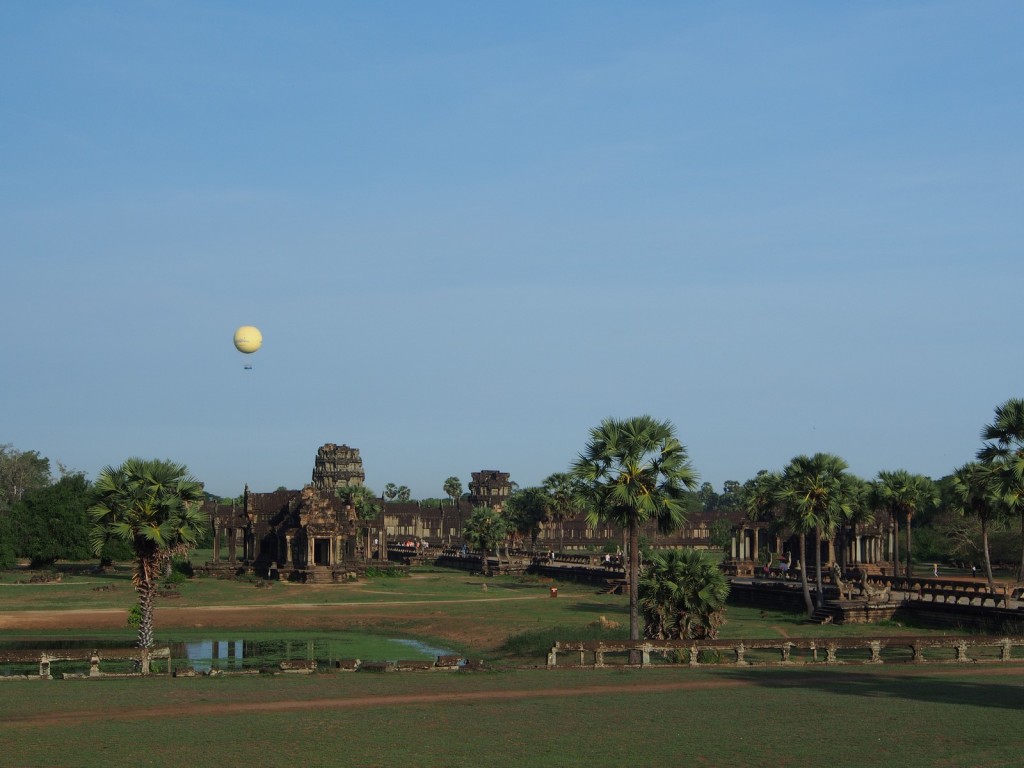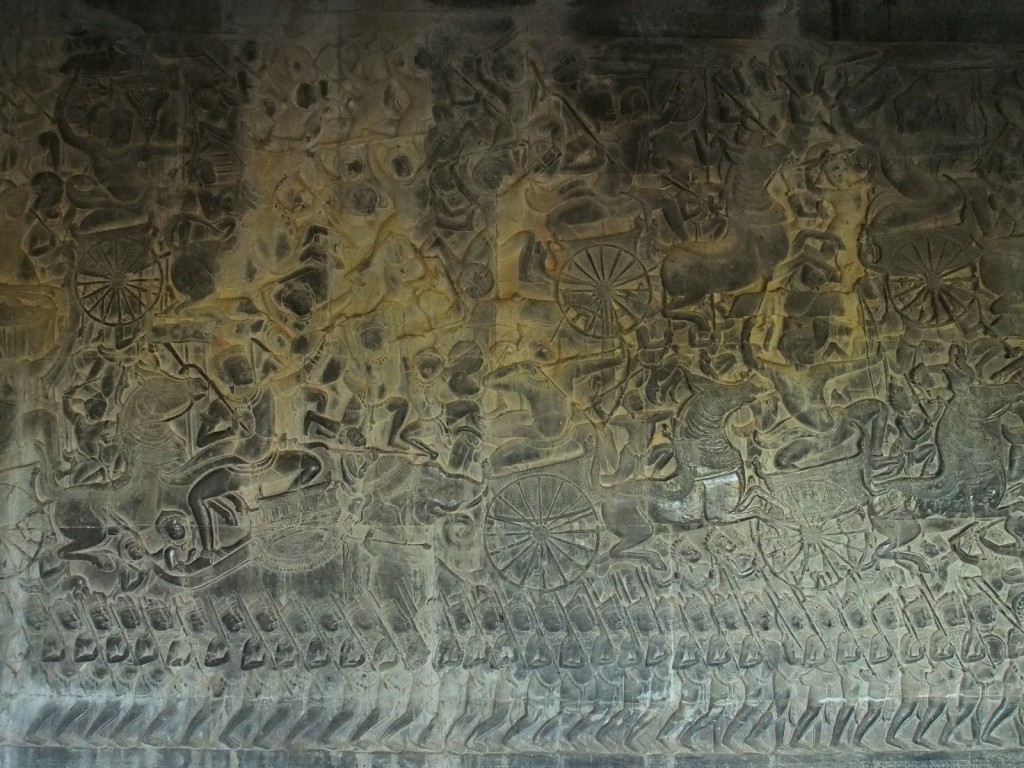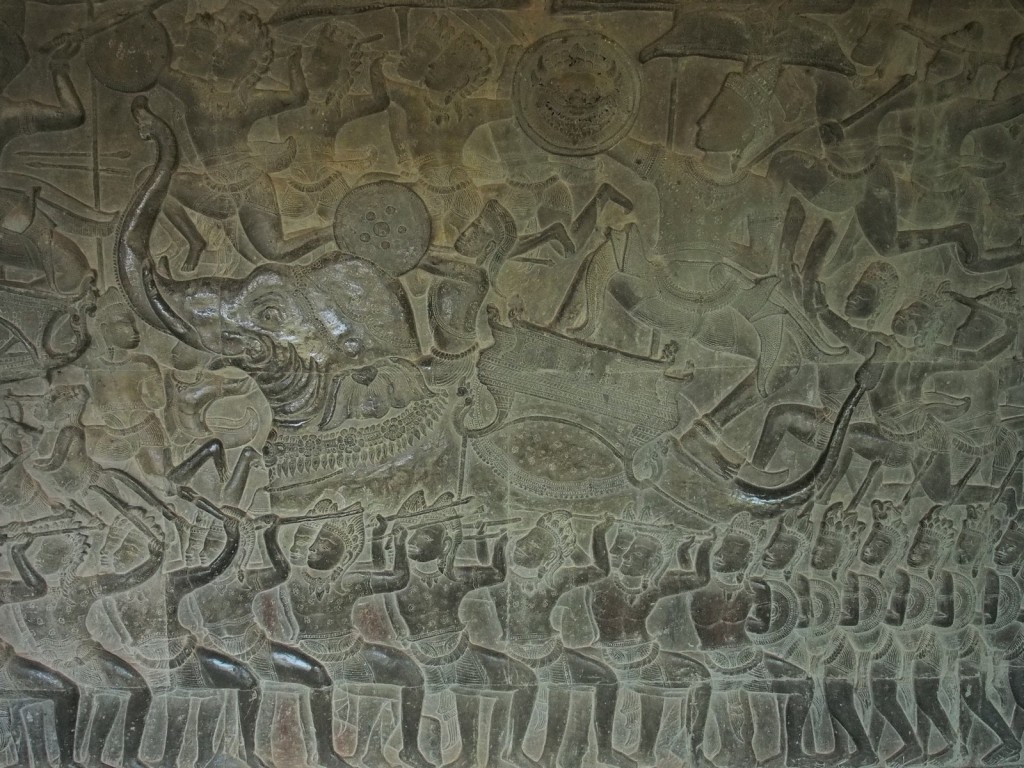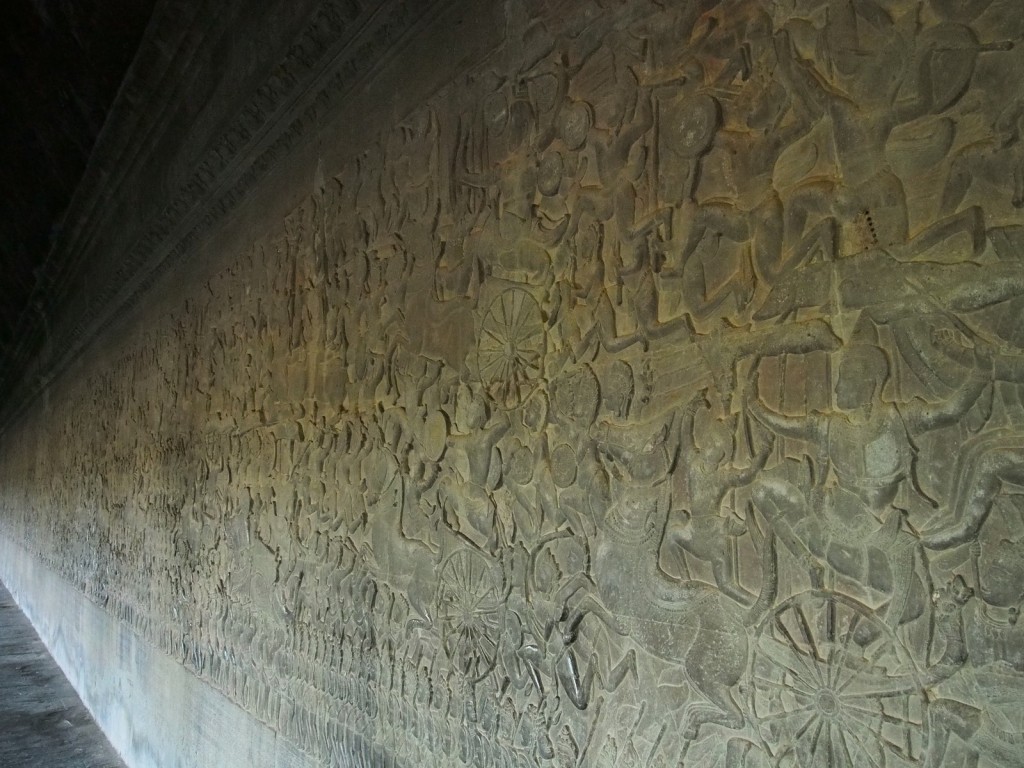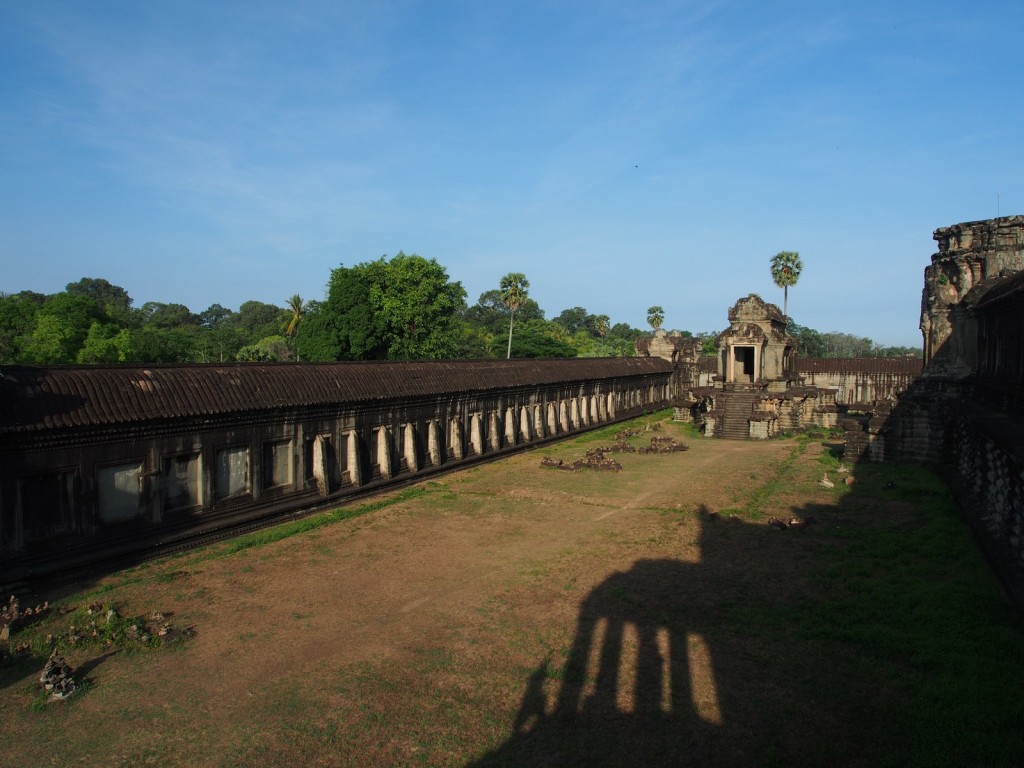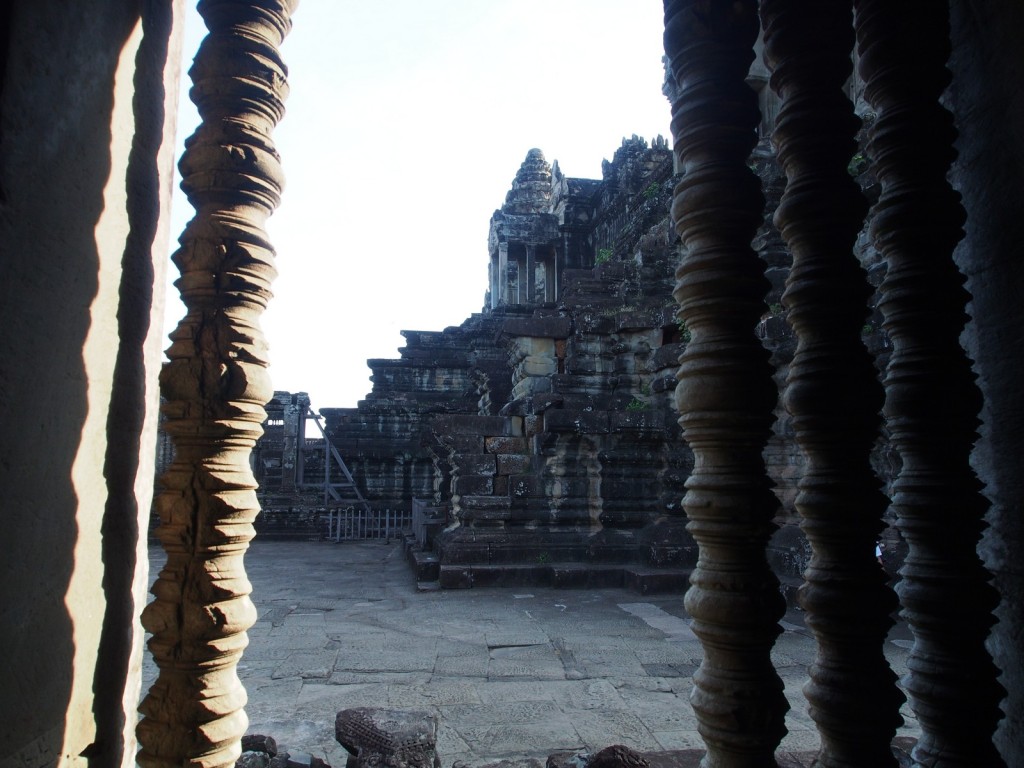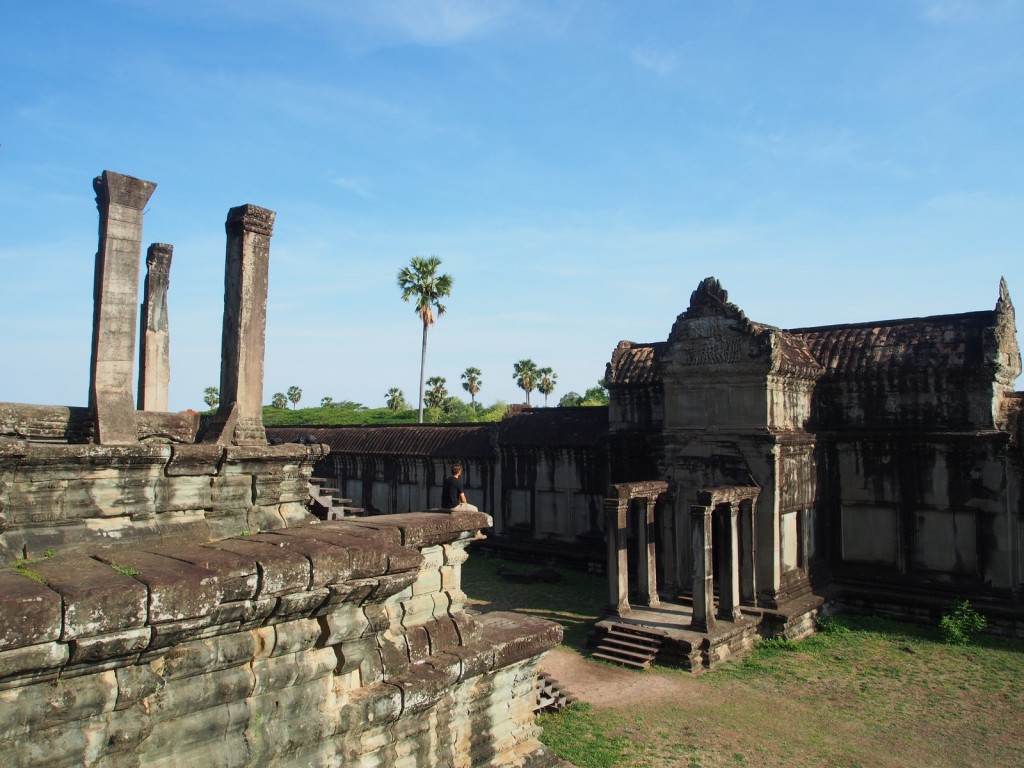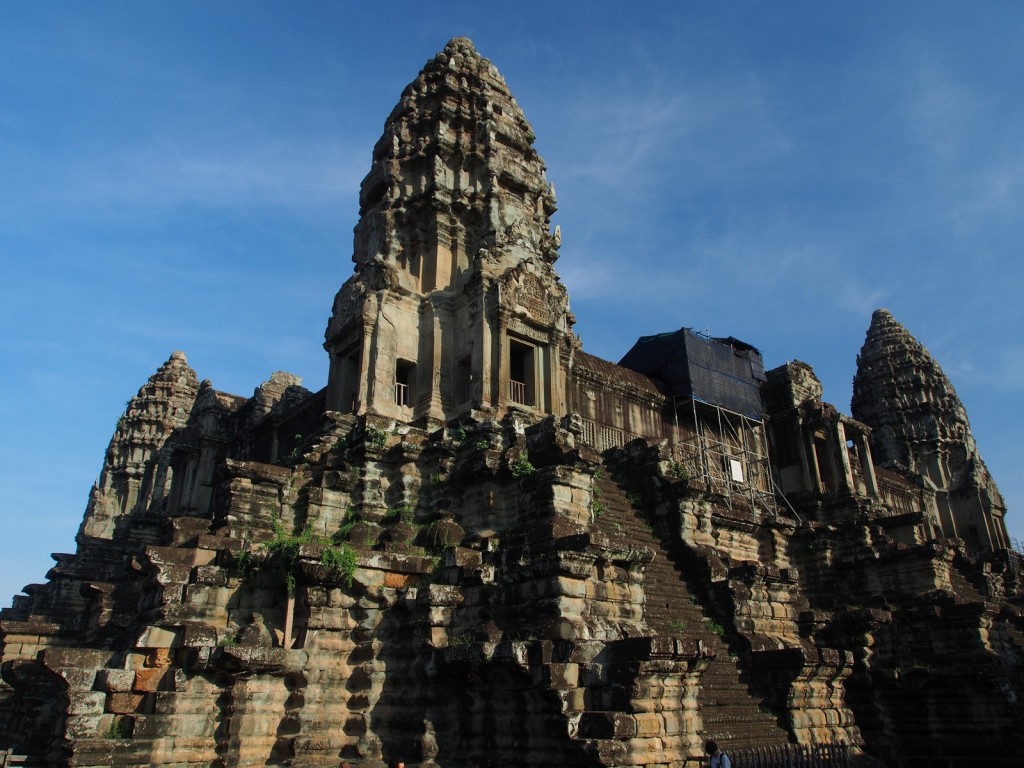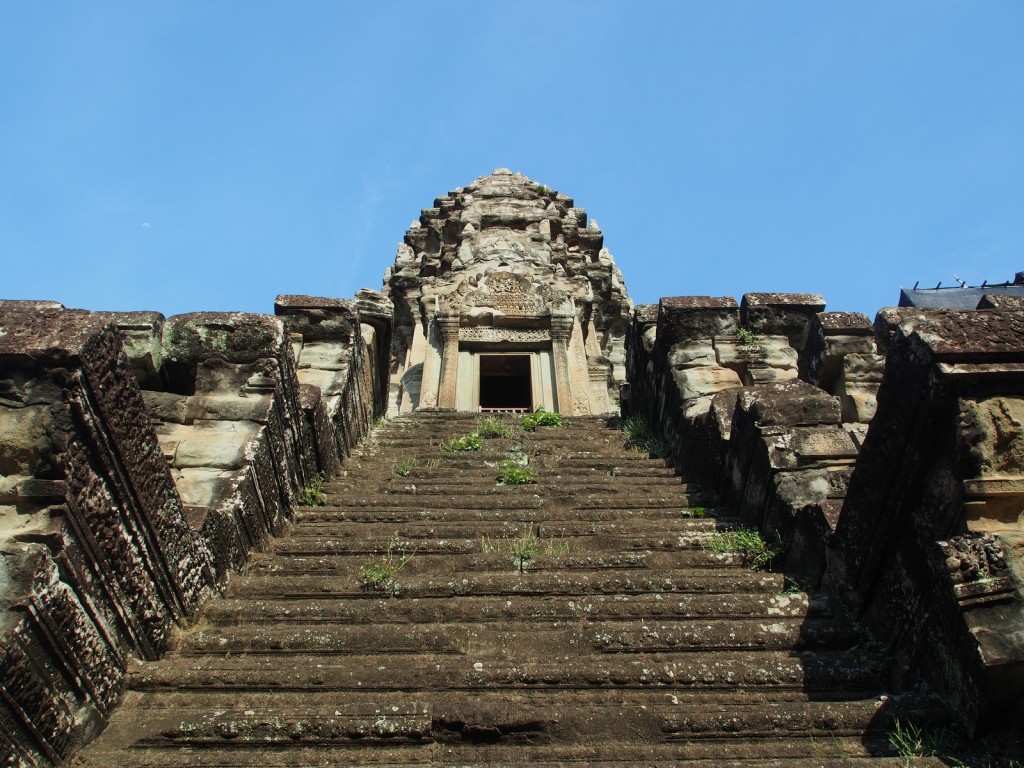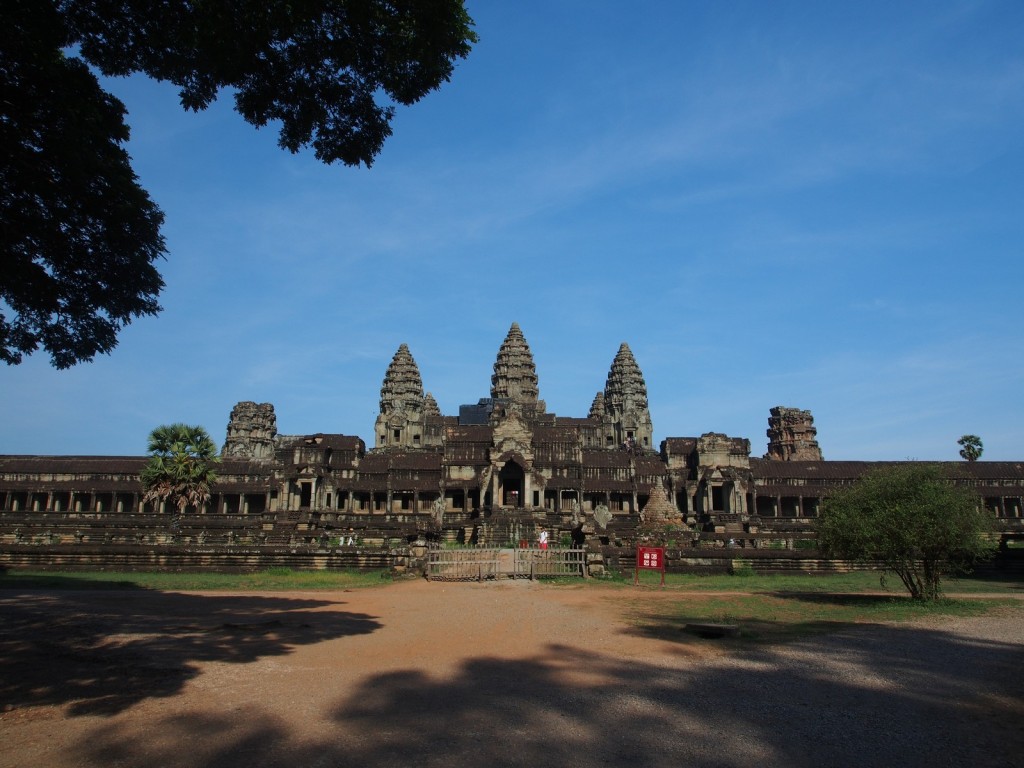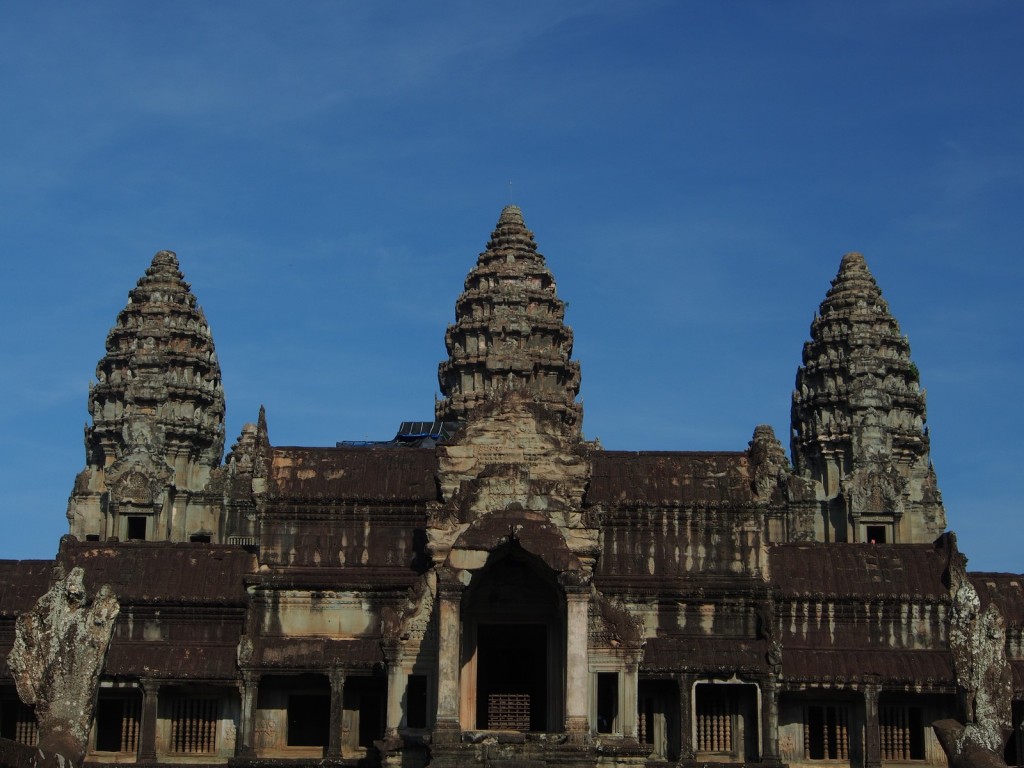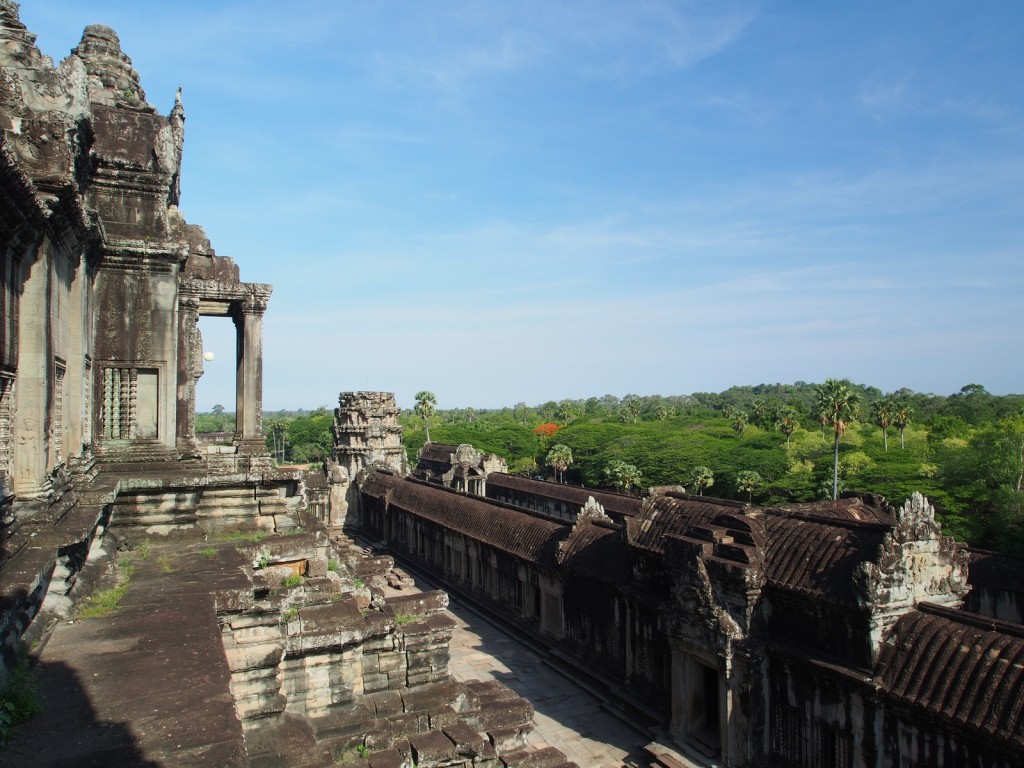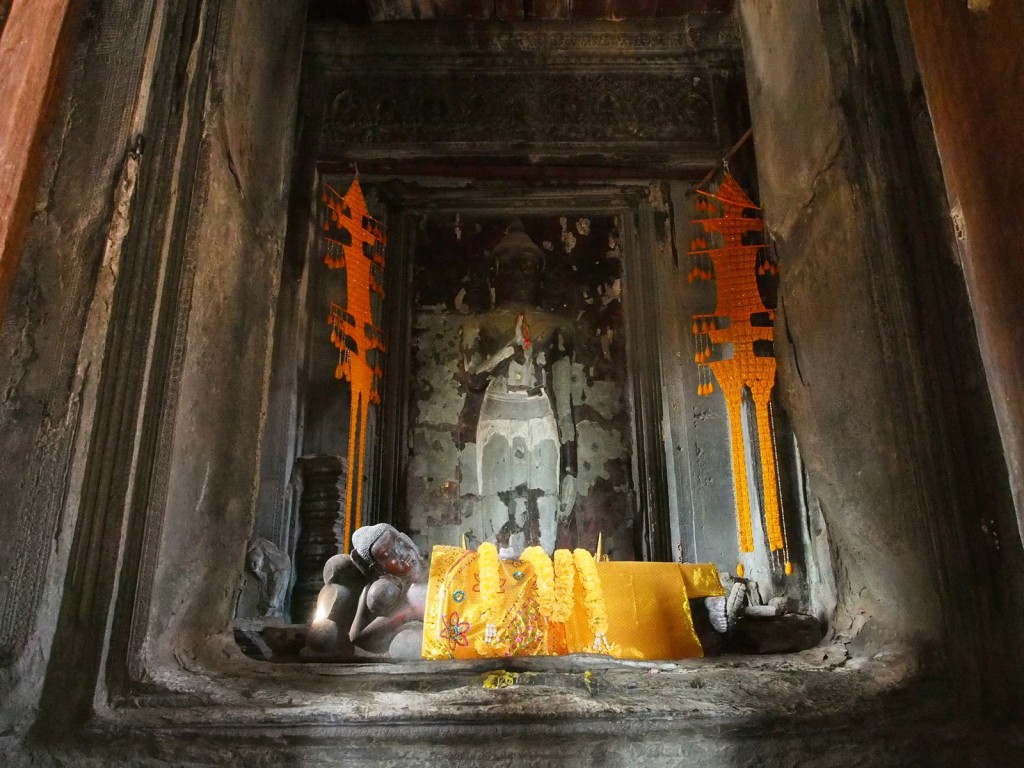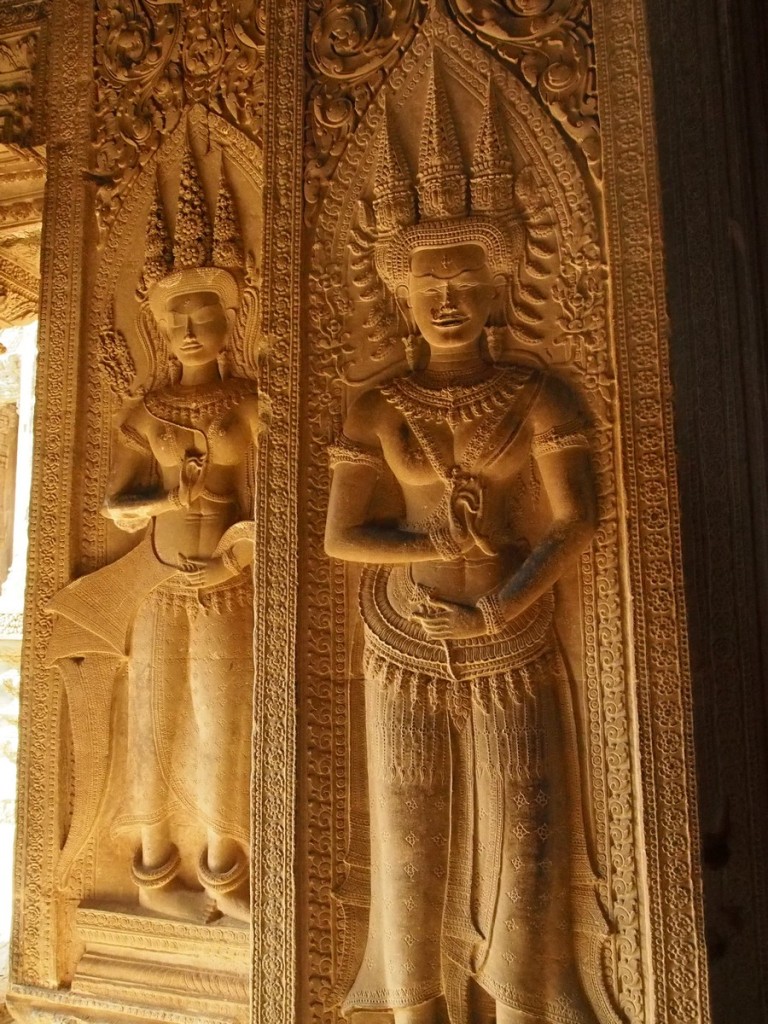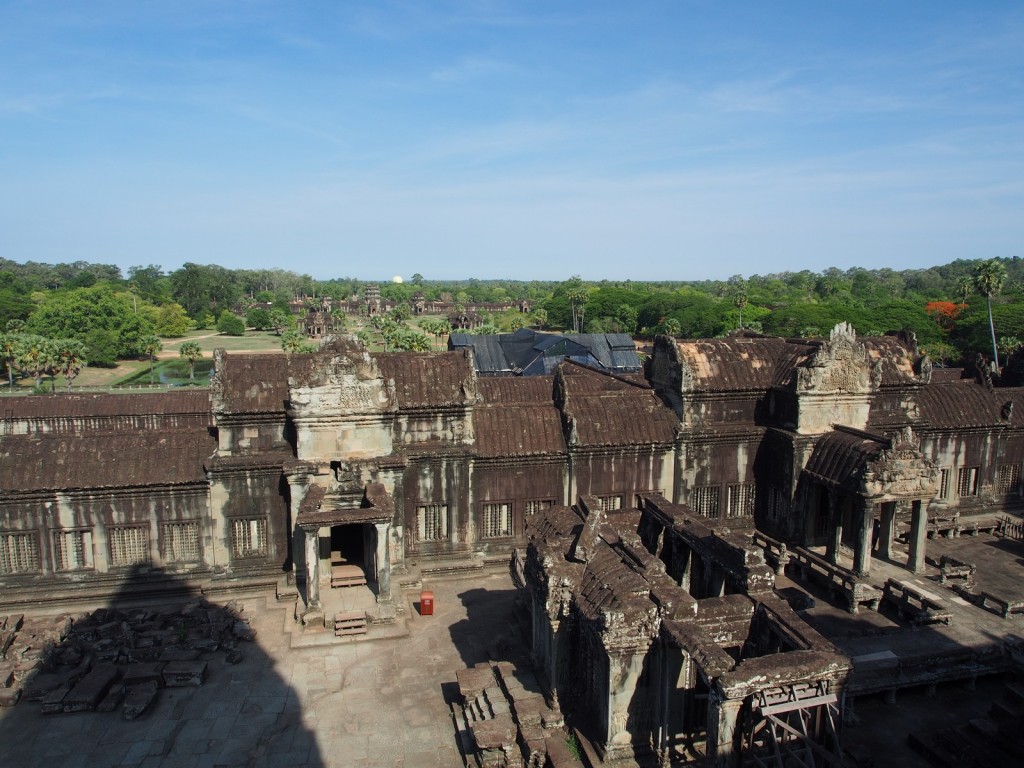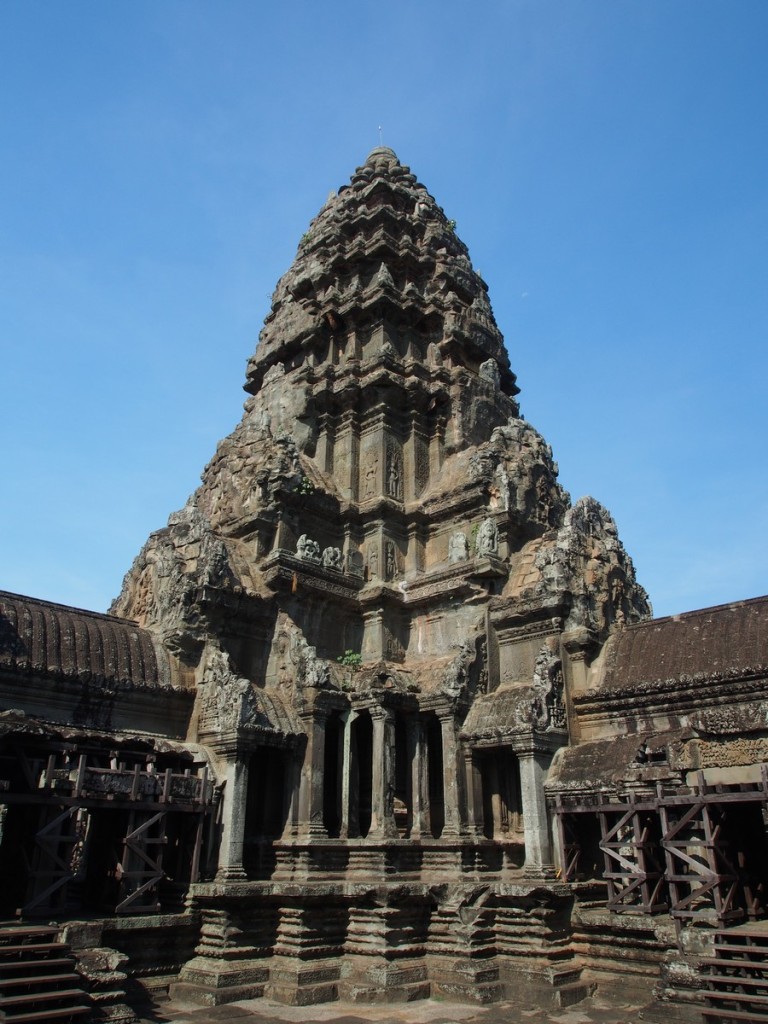A quick morning run down a good motorway took us to Siem Riep, the town adjacent to the archaeological park of Angkor Wat, where we quickly dumped our bags at the hotel and set about exploring.
(Starting a quick history lesson for context, scroll past if you just want the pictures). The Khmer Empire was the strongest regional power between the 9th and 15th Centuries, at times ruling over modern-day Cambodia, Thailand, and Laos, as well as Southern Vietnam and parts of Myanmar. During this time they constructed a great capital city, Angkor Thom, as well as a number of large temples such as Angkor Wat and Bayon. Following their loss to the Thai Ayutthaya Empire, Angkor fell into disuse and was eventually all but covered by the jungle, until its popularisation by the French in the 19th Century. The temples are a mix of Hindu and Buddhist traditions, and comprise several different styles.
Arriving in the lunchtime heat (around 40 degrees), we headed straight to one of the most famous temples in the complex, Bayon – known above all for the large, serene carved faces of Buddha staring out in every direction.
The next morning, with a full day allocated to exploring as much as possible, we got up at dawn and hit the park by 6am, heading to Ta Prohm. During restoration the decision was made to leave many of the trees in place, and only clearing the undergrowth, to allow visitors to understand what it must have been like to be an early European explorer encountering the temple through the jungle. It was also used to great effect in the Tomb Raider movie from a few years ago. It’s certainly an eerie place, particularly as we were early enough to avoid the crowds and the heat.
With the crowds starting to encroach, we moved on to some of the quieter temples. Firstly, Ta Keo, an imposing but somewhat simpler pyramidal temple near Ta Prohm.
Our next temple was the somewhat less frequented Preah Khan. Built at the same time and in the same style as Ta Prohm, it has also been subject to less of a ‘restoration’ than maintenance of the existing form, including leaving large trees in place. We found this a much more peaceful temple, with plenty of small alcoves to explore, where you are able to sit and contemplate the surroundings without seeing or hearing other tourists.
Our next stop was to cross back into the ancient city itself, Angkor Thom. The walls included an area of around 9 square kilometres, with magnificent gates erected in each direction, in the same style as Bayon.
There are a number of structures inside Angkor Thom – firstly, the Elephant Terrace.
Then the Palace area, with the King’s personal temple.
Finally, the Terrace of the Leper King, with thousands of carved figures.
Earlier in the morning I had returned to my bike to find the rear tyre flat. I pumped it up, but within a few hours it was flat again. Stopping by a local tyre repair shop quickly fixed it – much faster (and with much less sweat) than if I had done it.
That’s a vulcanising press made out of an old piston full of flaming petrol (with the gudgeon pin welded as a handle), and a C clamp to hold it in place. Crude, but effective.
Of course the arrival of two very large and loud foreign bikes quickly attracted a crowd of locals. We were soon back on the road, for the princely sum of $8.
Some other sites and smaller temples around Angkor.
Our last sight for the day was Pre Rup, a rather weathered temple, but one with a good view over the surrounding jungle – it seemed lots of people were staying there for the sunset, so we stuck around too.
Sadly though, we were all kicked out by the tourist police just before the actual sunset, so we missed it. The bloke did however offer to sell me his official badge for $10 – I very politely declined.
We had saved the best, Angkor Wat itself, for last. An extremely early morning the next morning led to us seeing the sunrise over the temple and moat.
The approach to the temple itself crosses a moat, a gate structure, and several hundred metres of grounds.
The outer cloister of the temple itself is covered in relief carvings of both the Ramayana, and the exploits of King Suryavarman II, who built it in honour of Shiva.
Progressing inside, there are a number of inner courtyards and outbuildings.
Then the inner sanctum towers above all else, with a tower in each of the four corners, surmounted by the taller central tower, some 65 metres above ground level.
As the inner sanctum opens to the public much later in the morning than the rest of the temple, we explored further, seeking the iconic view of the three towers, so important to the Cambodians that it’s represented on their national flag.
Back inside, we climbed the final set of stairs to the top, with a view over the rest of the temple, the surrounding jungle, and the shrines and carvings inside.
With lunchtime approaching, we headed back to the hotel and packed up, ready to move on to Phnom Penh.

